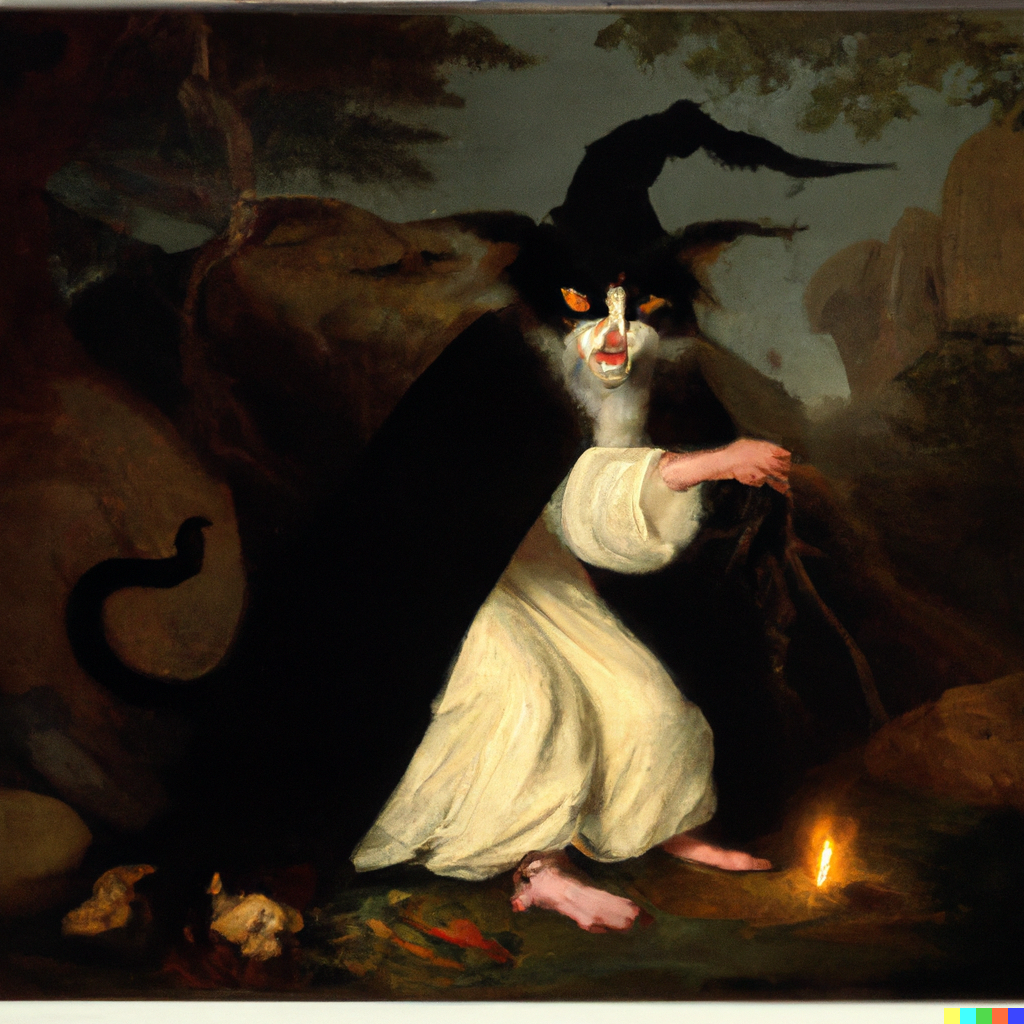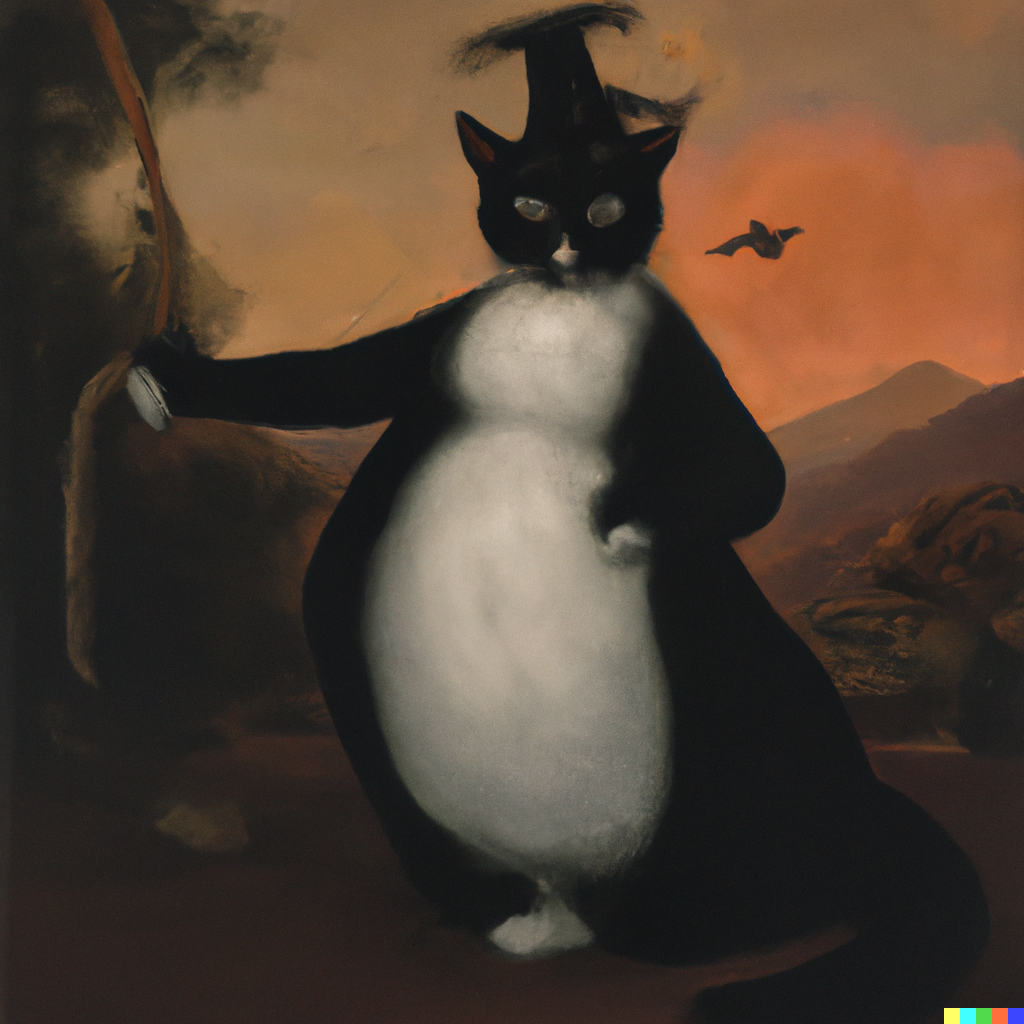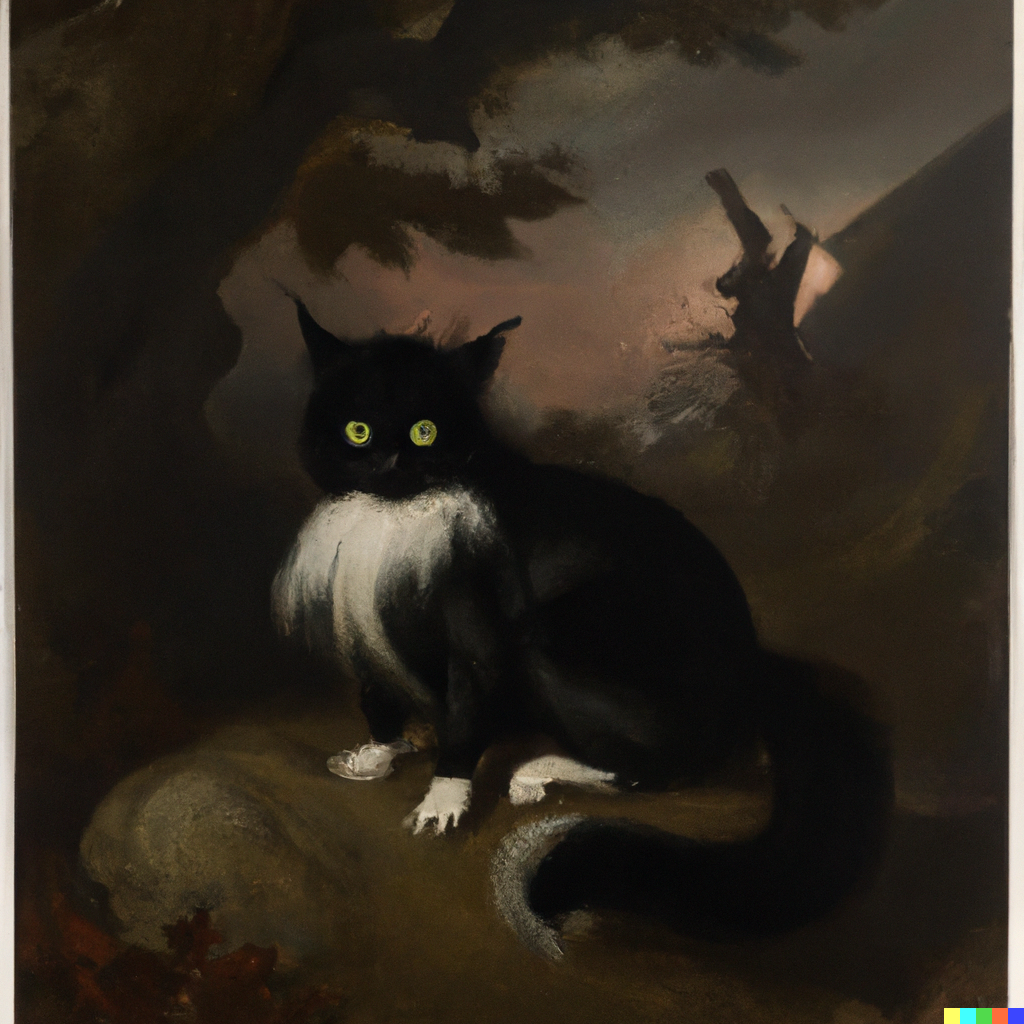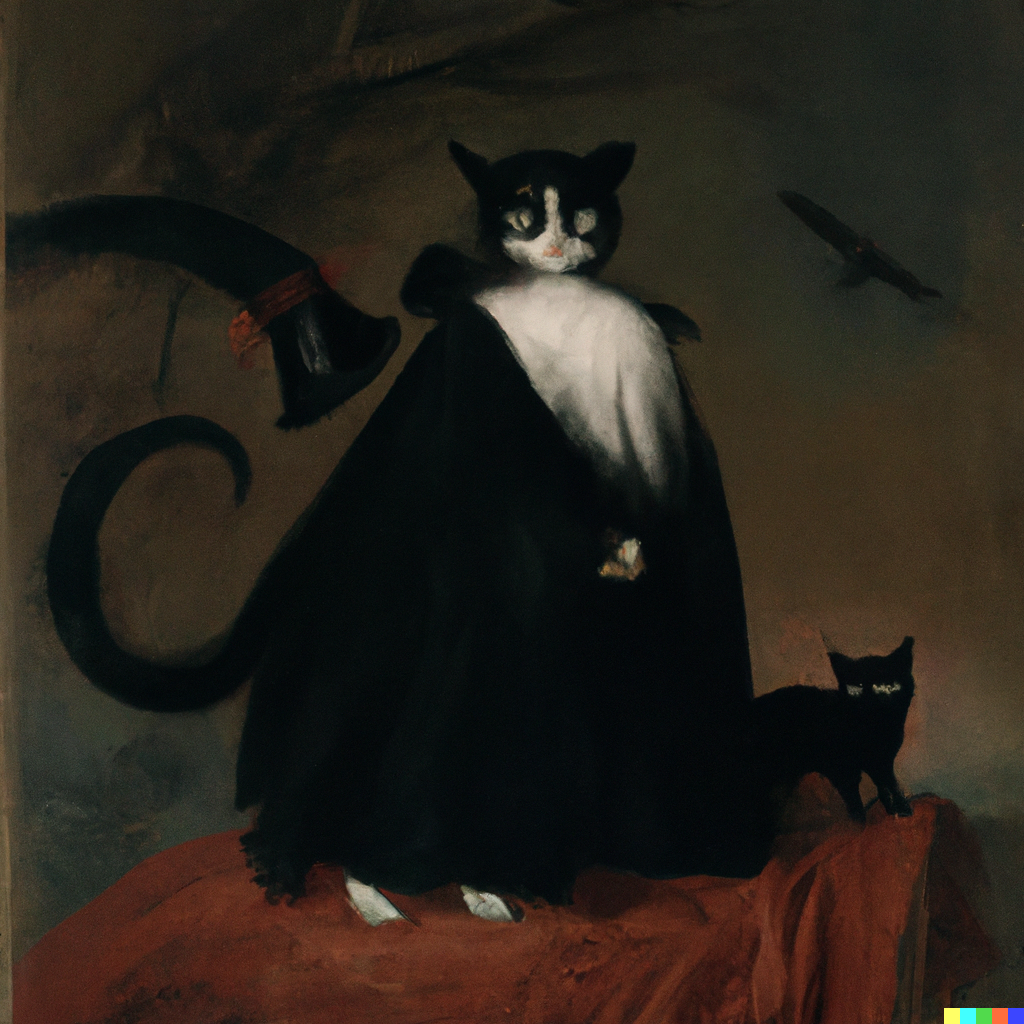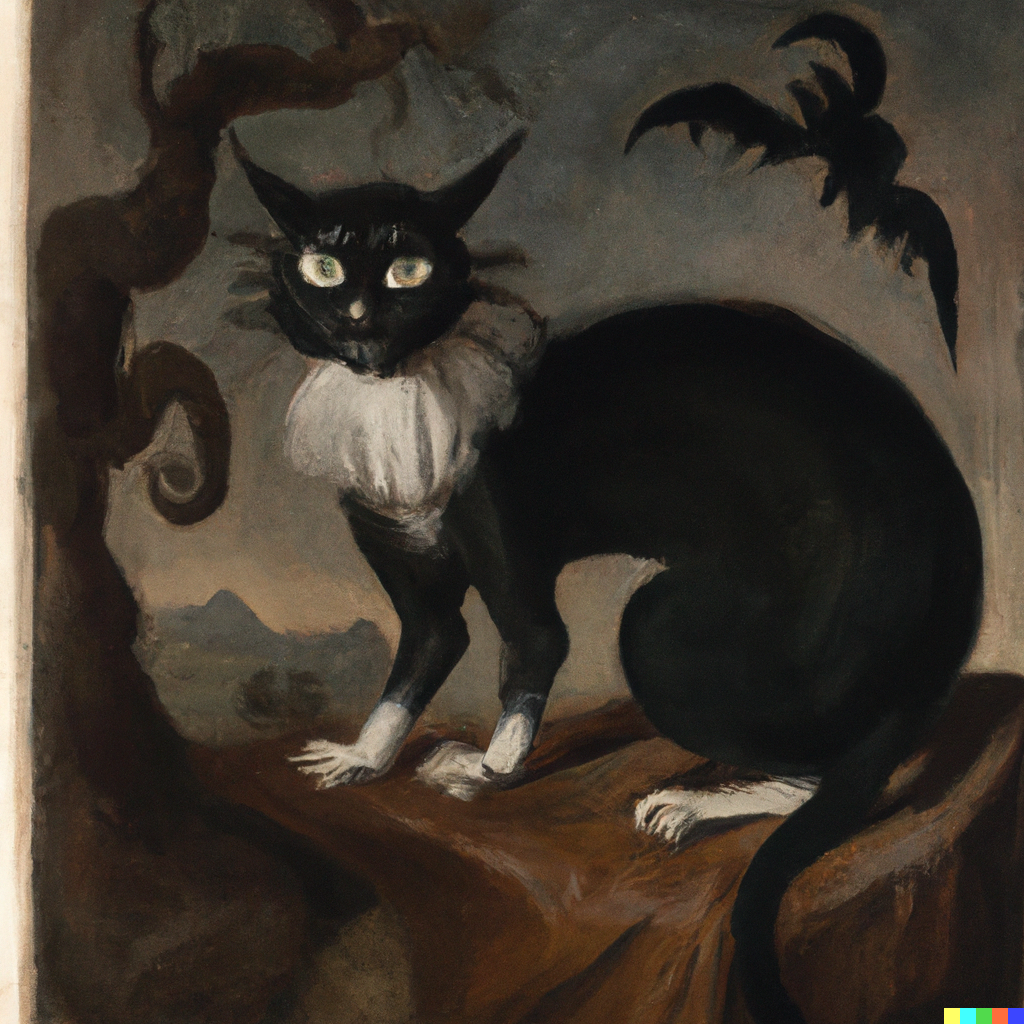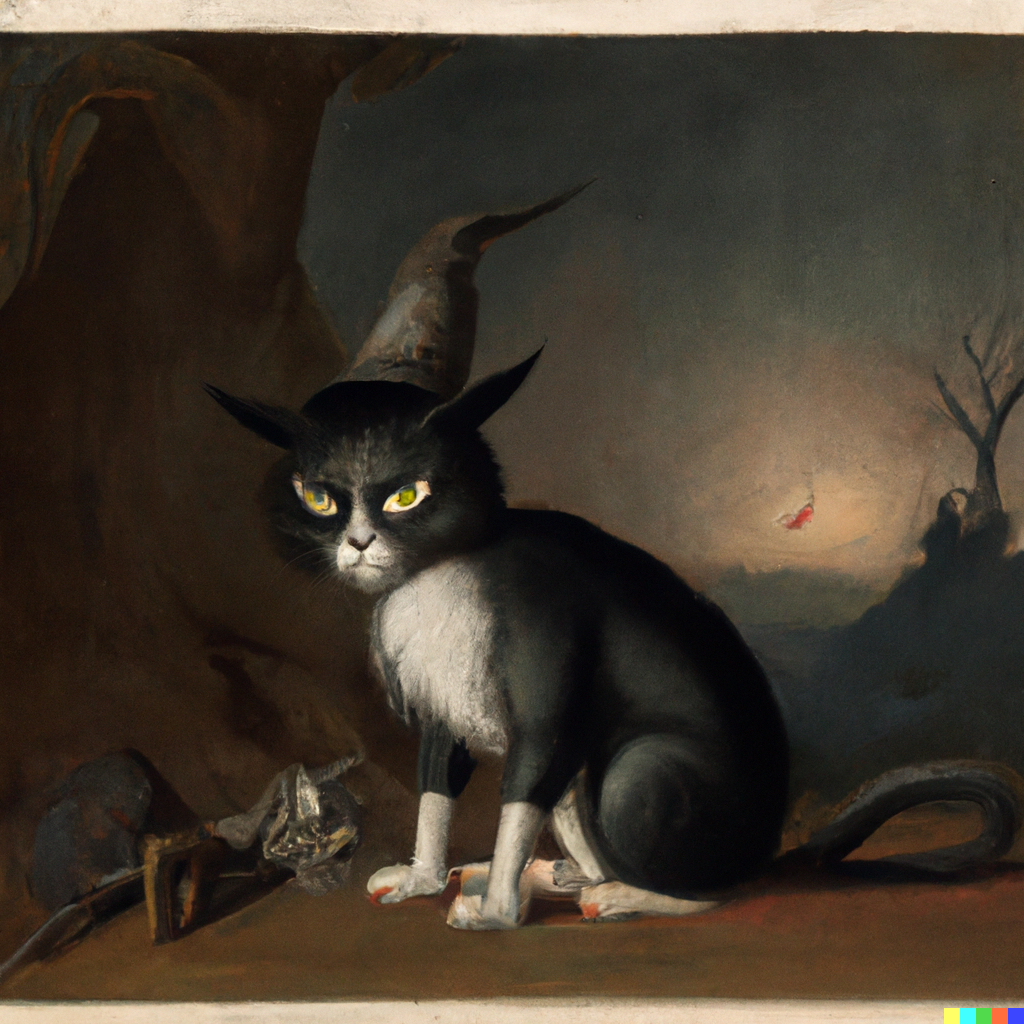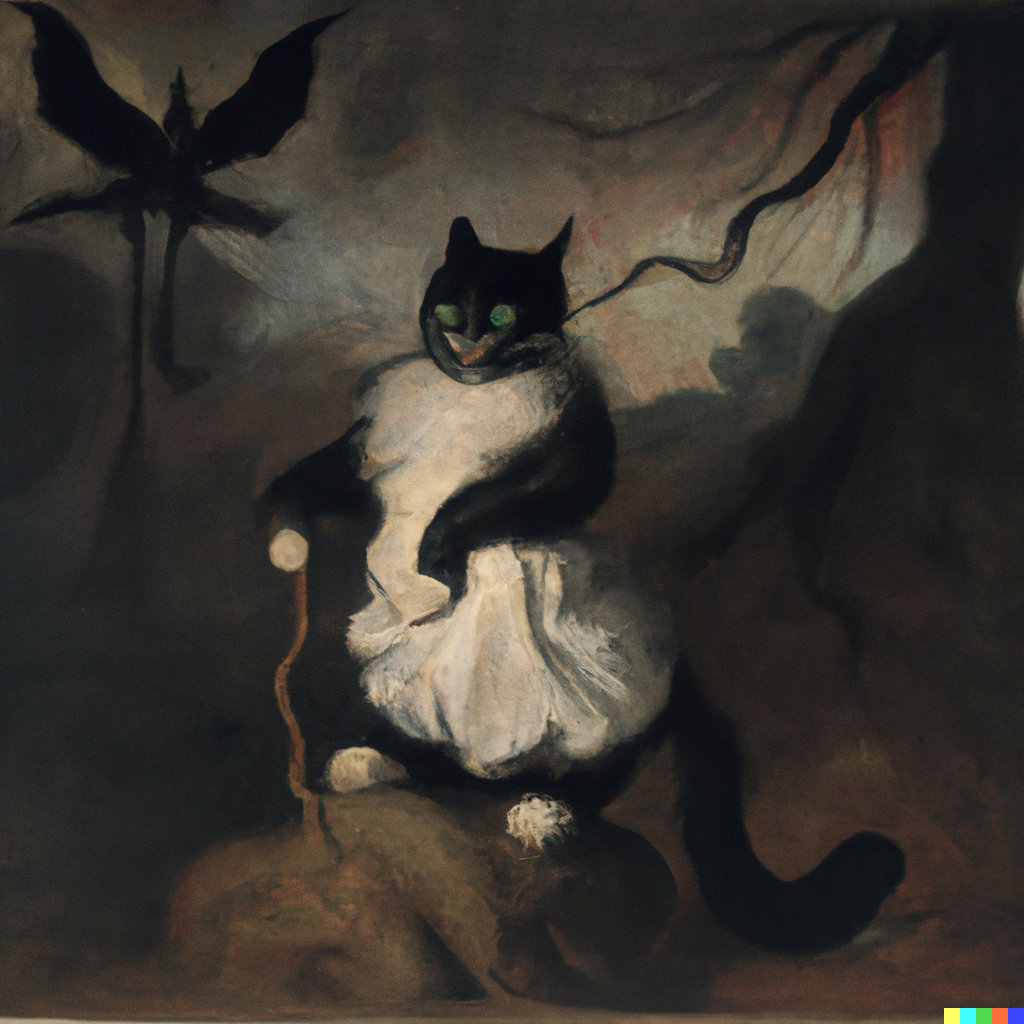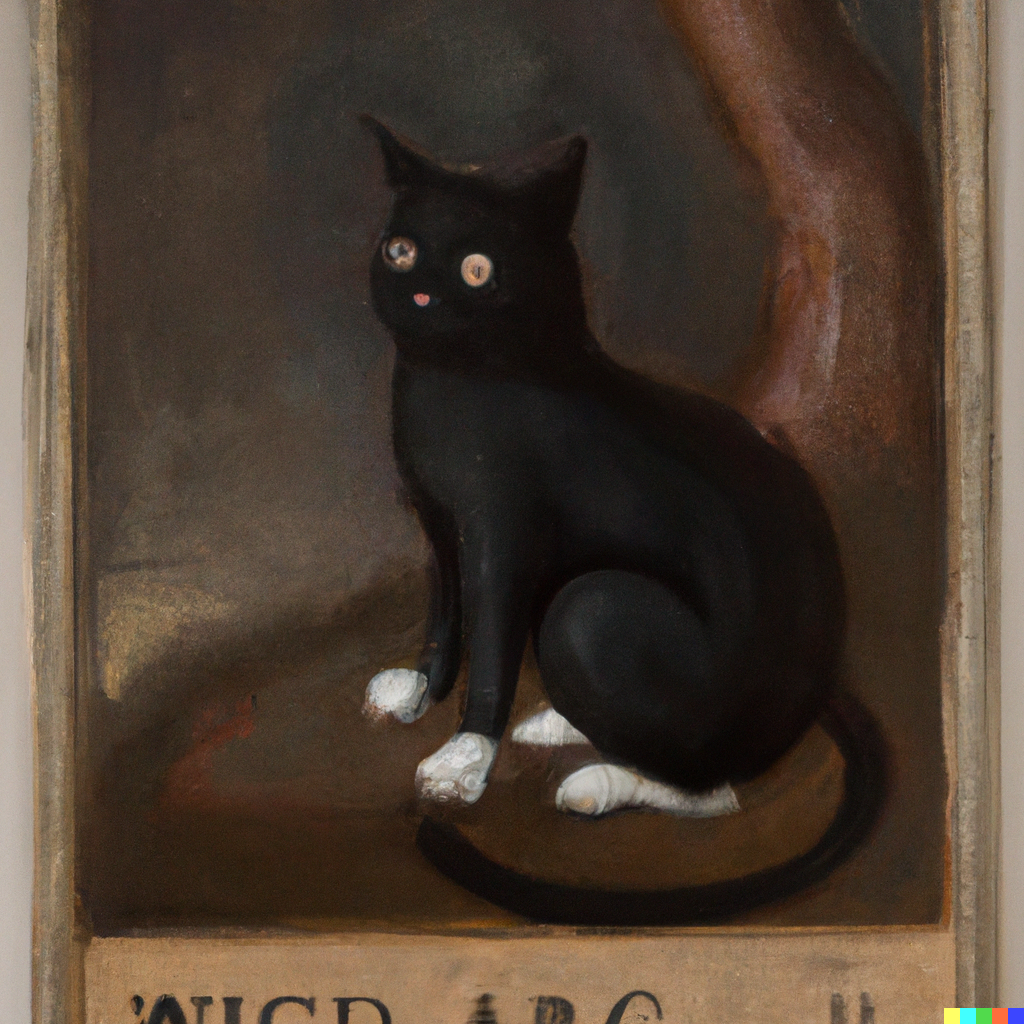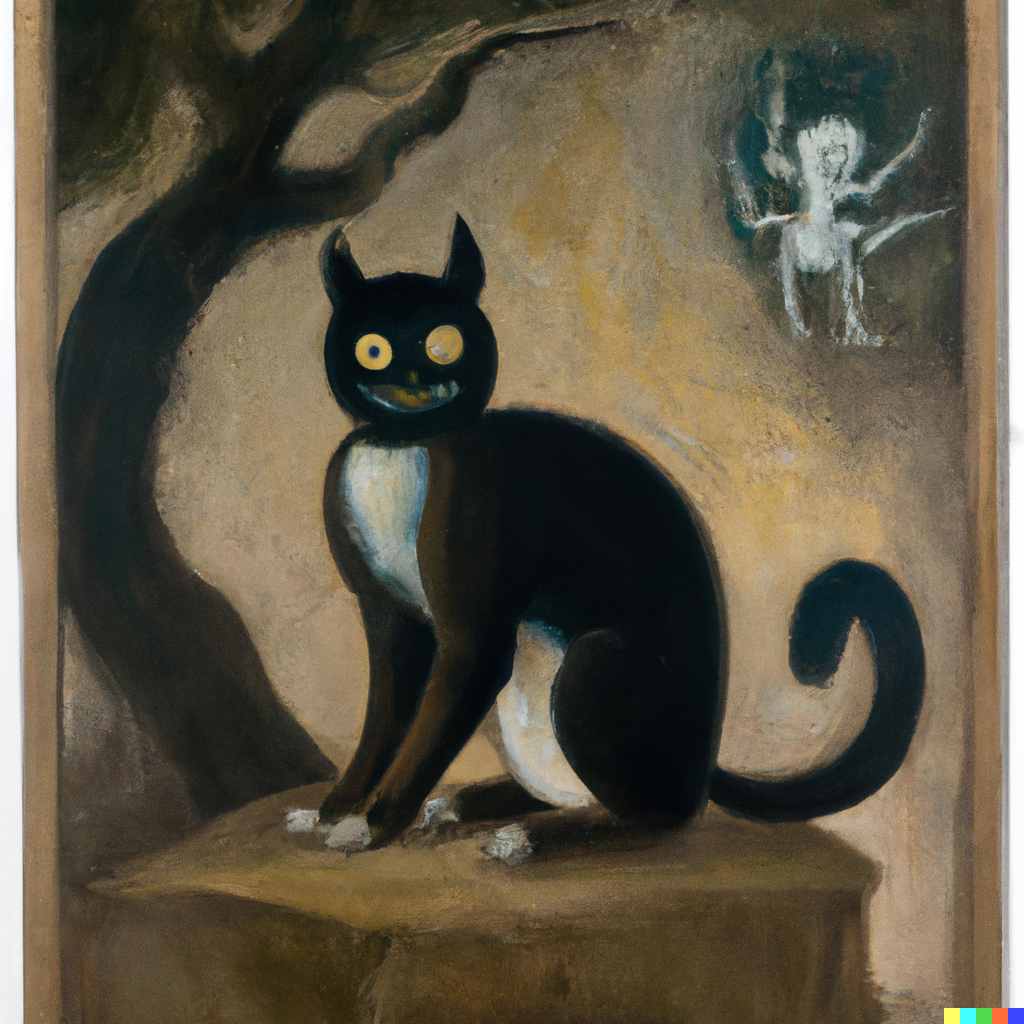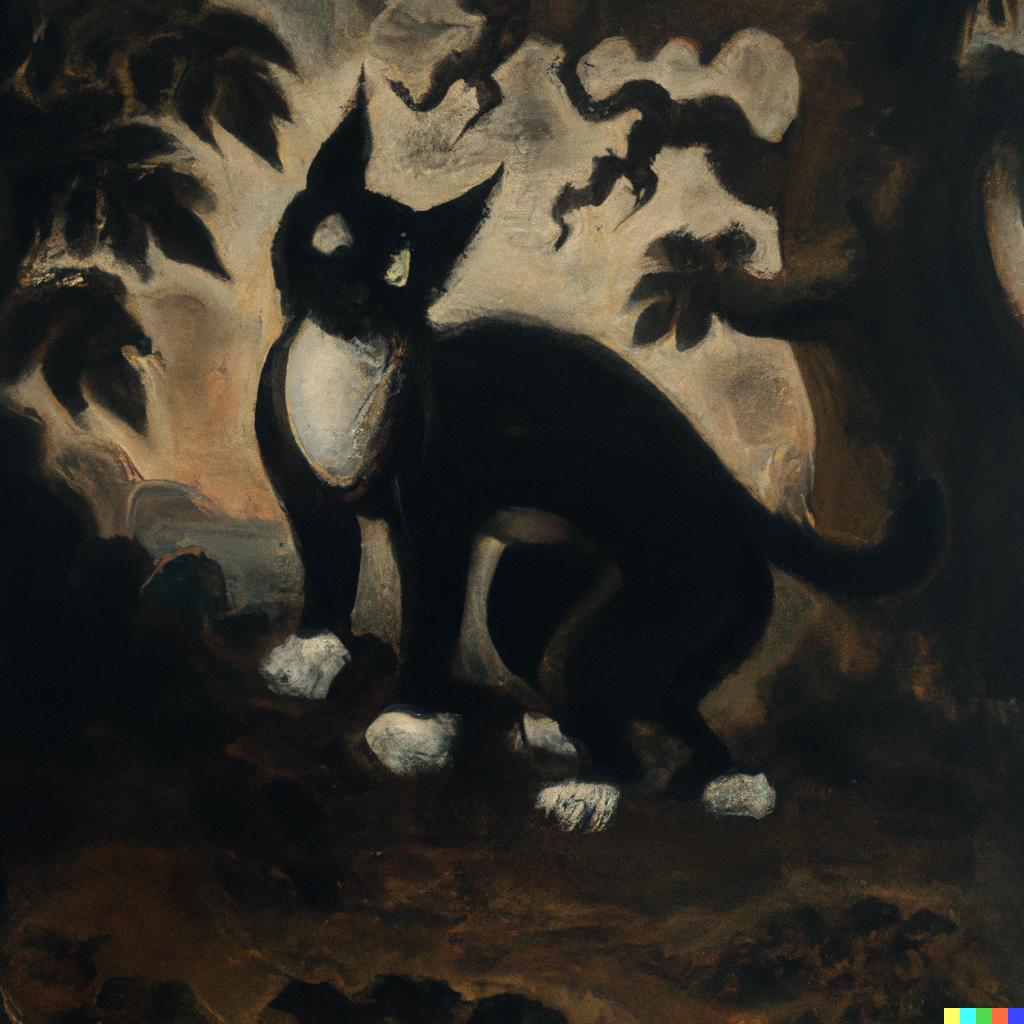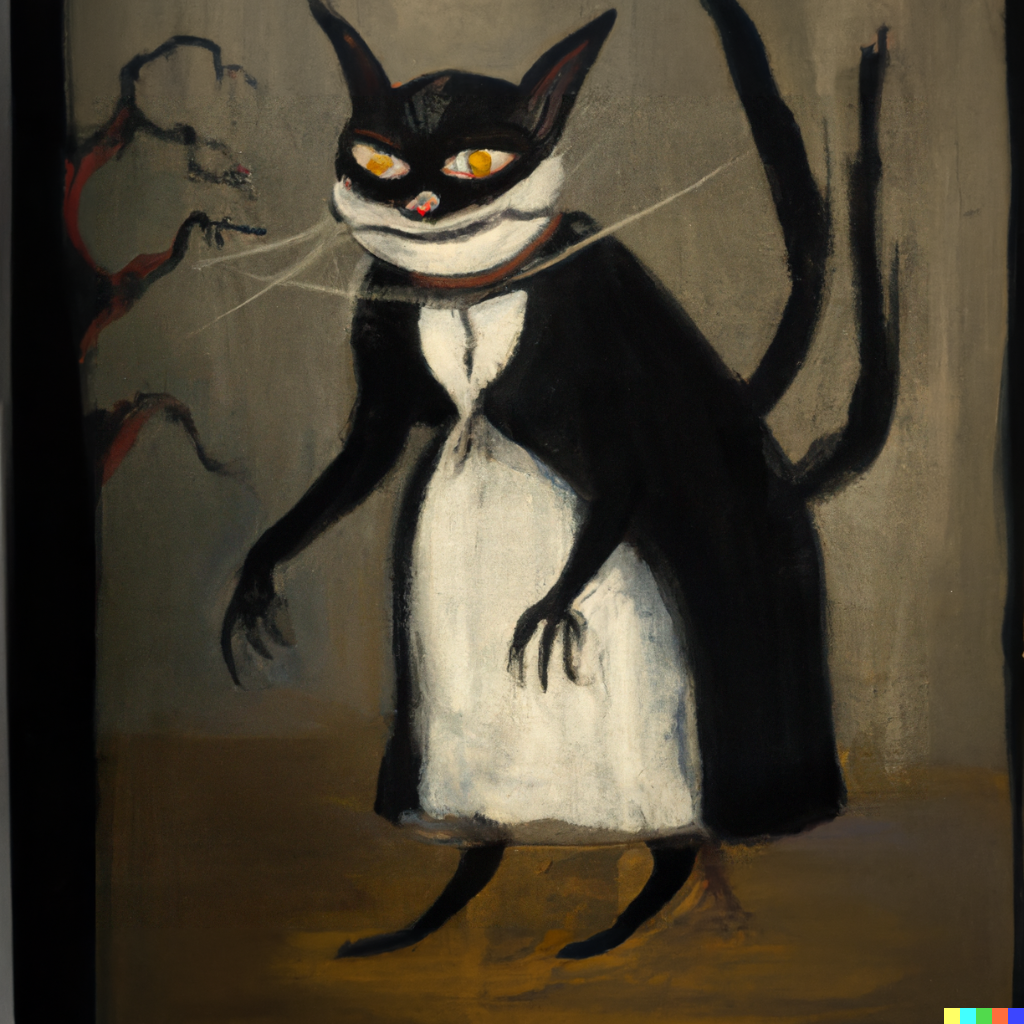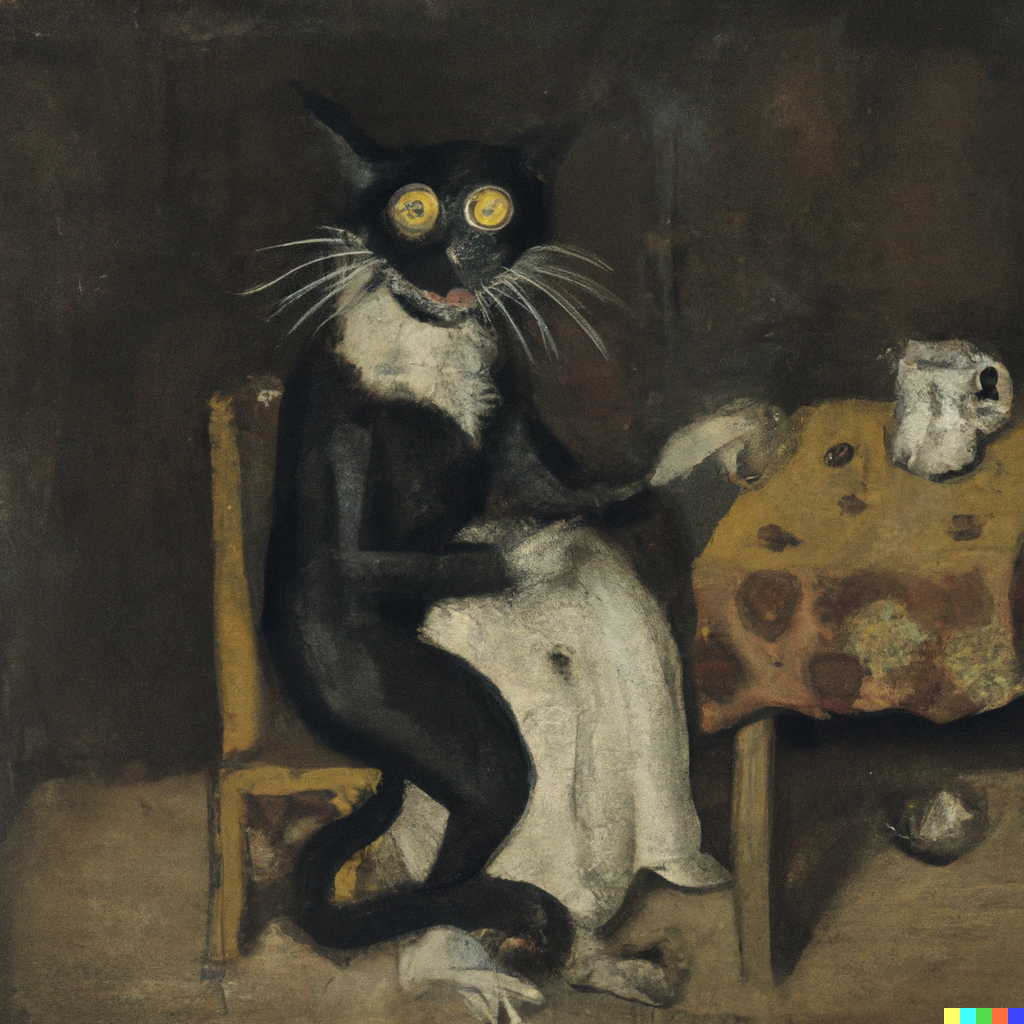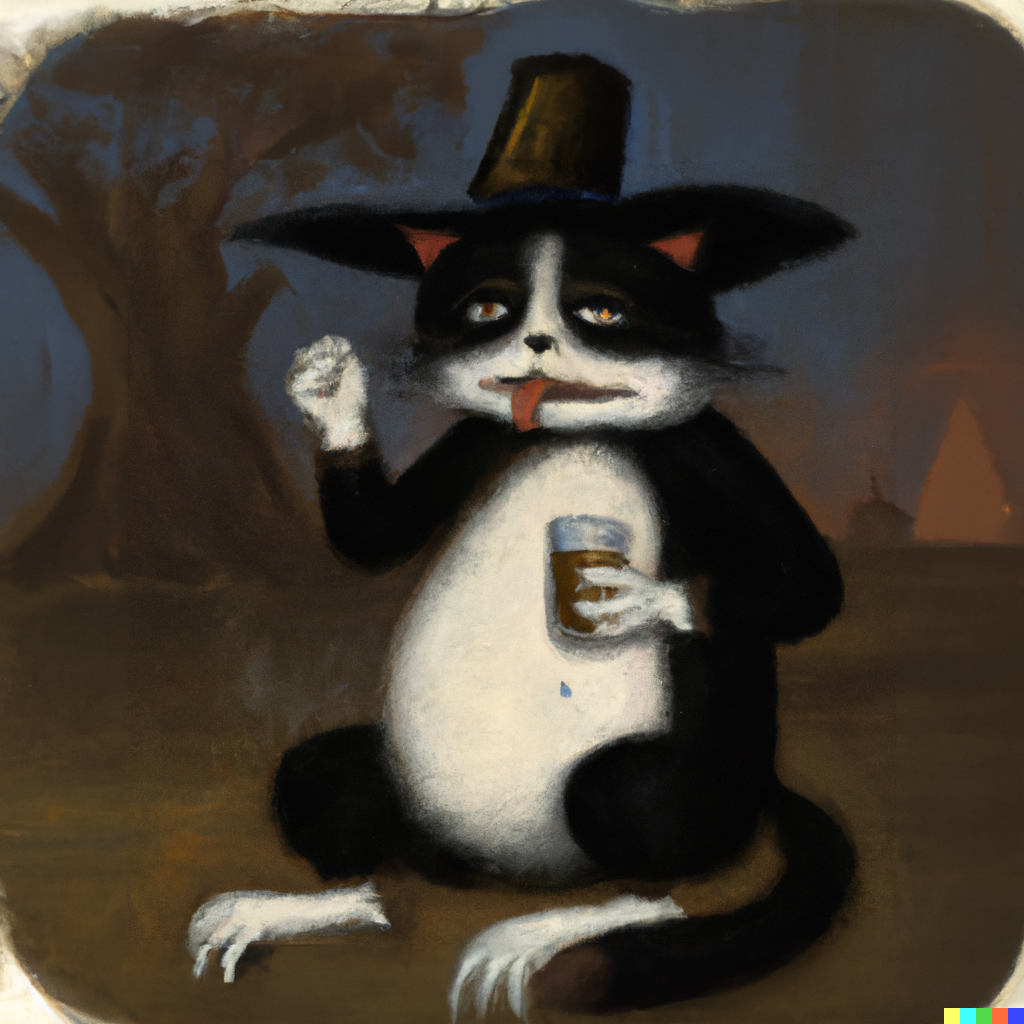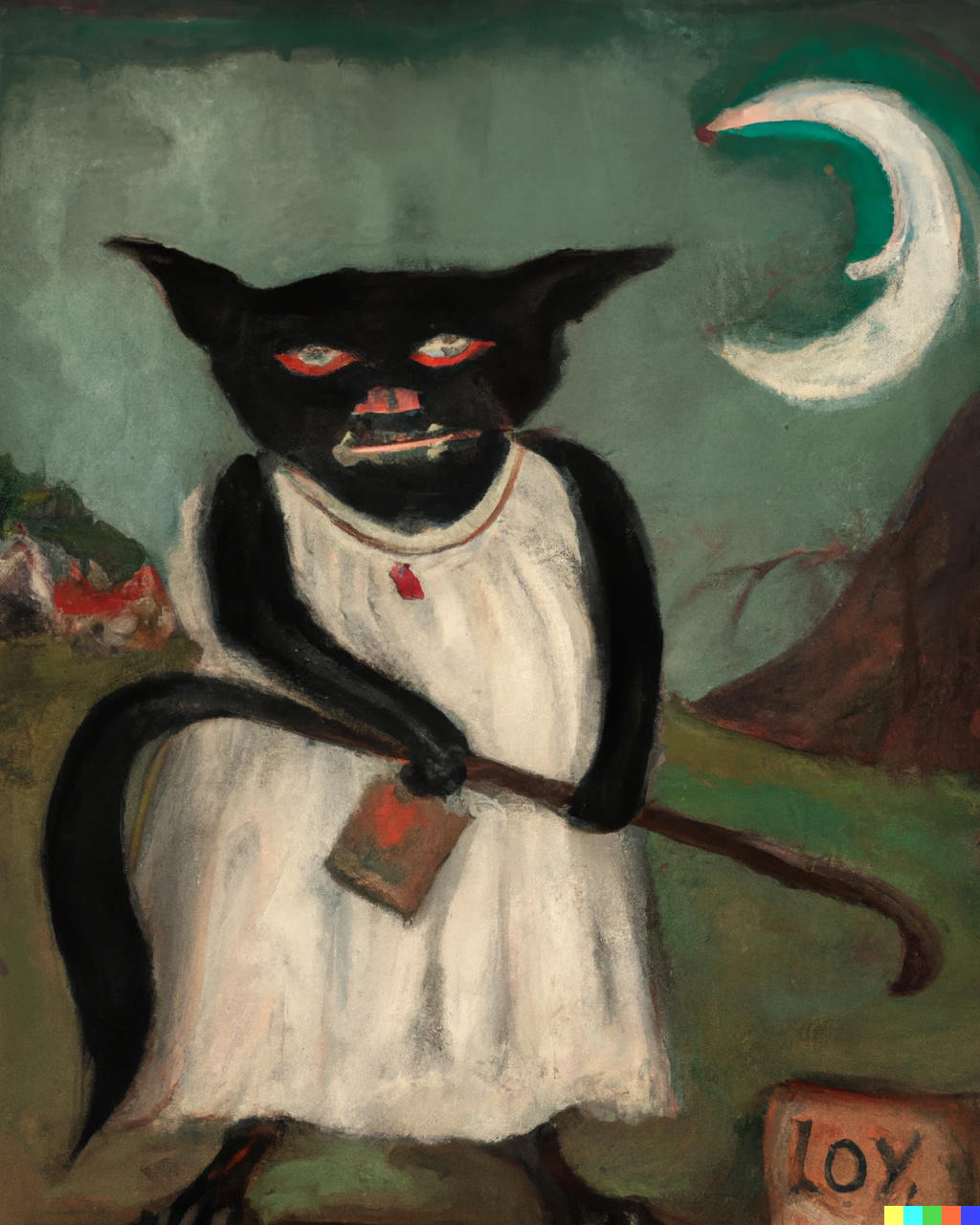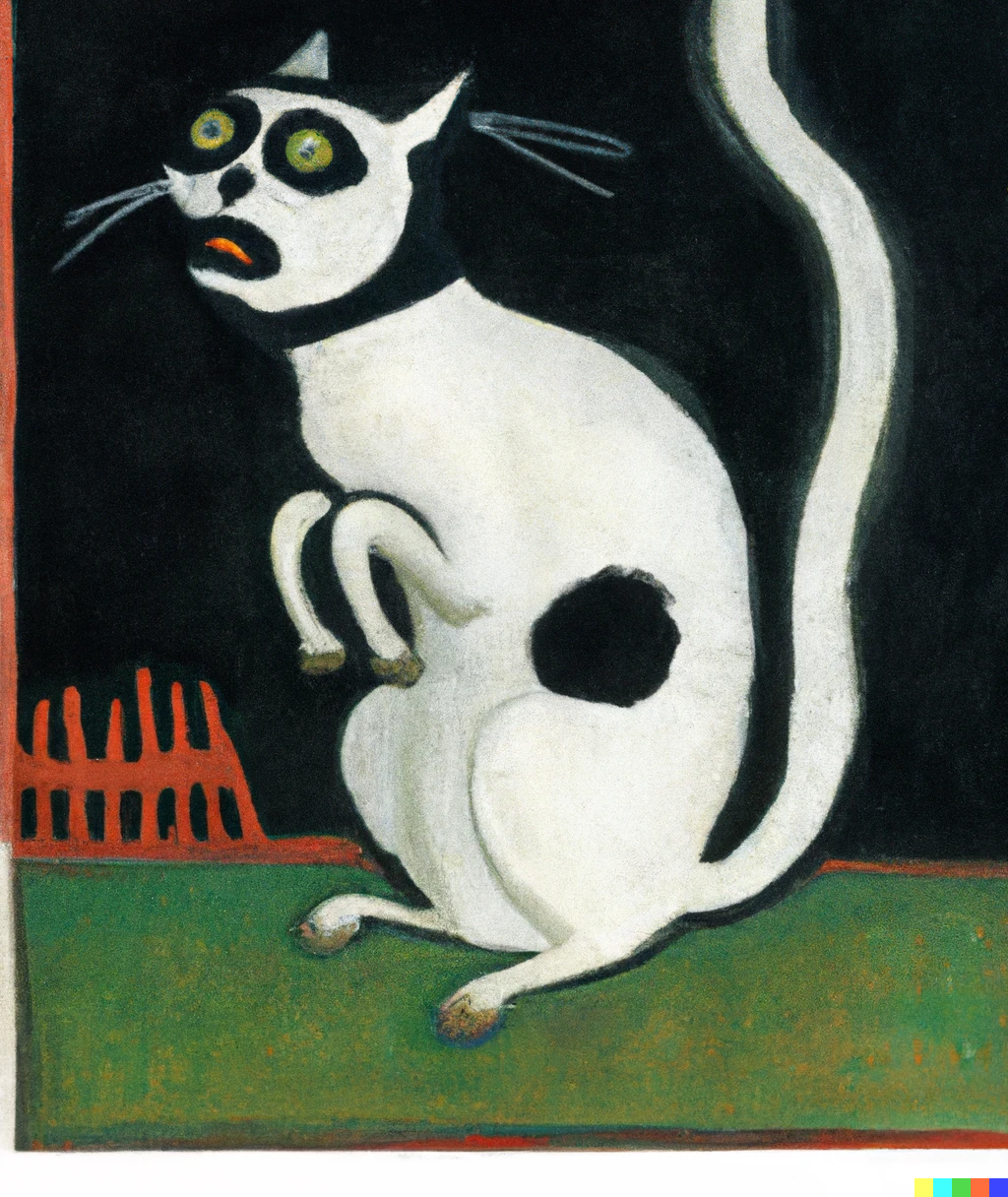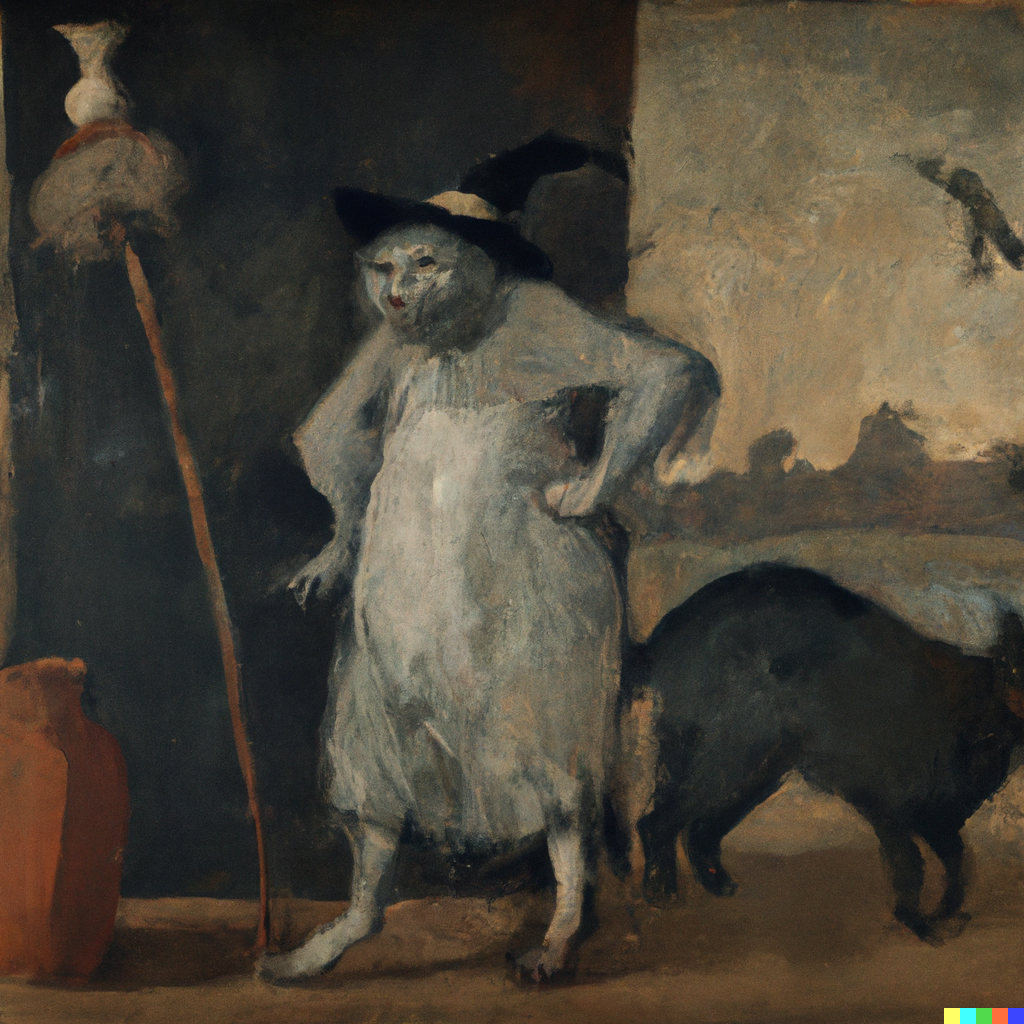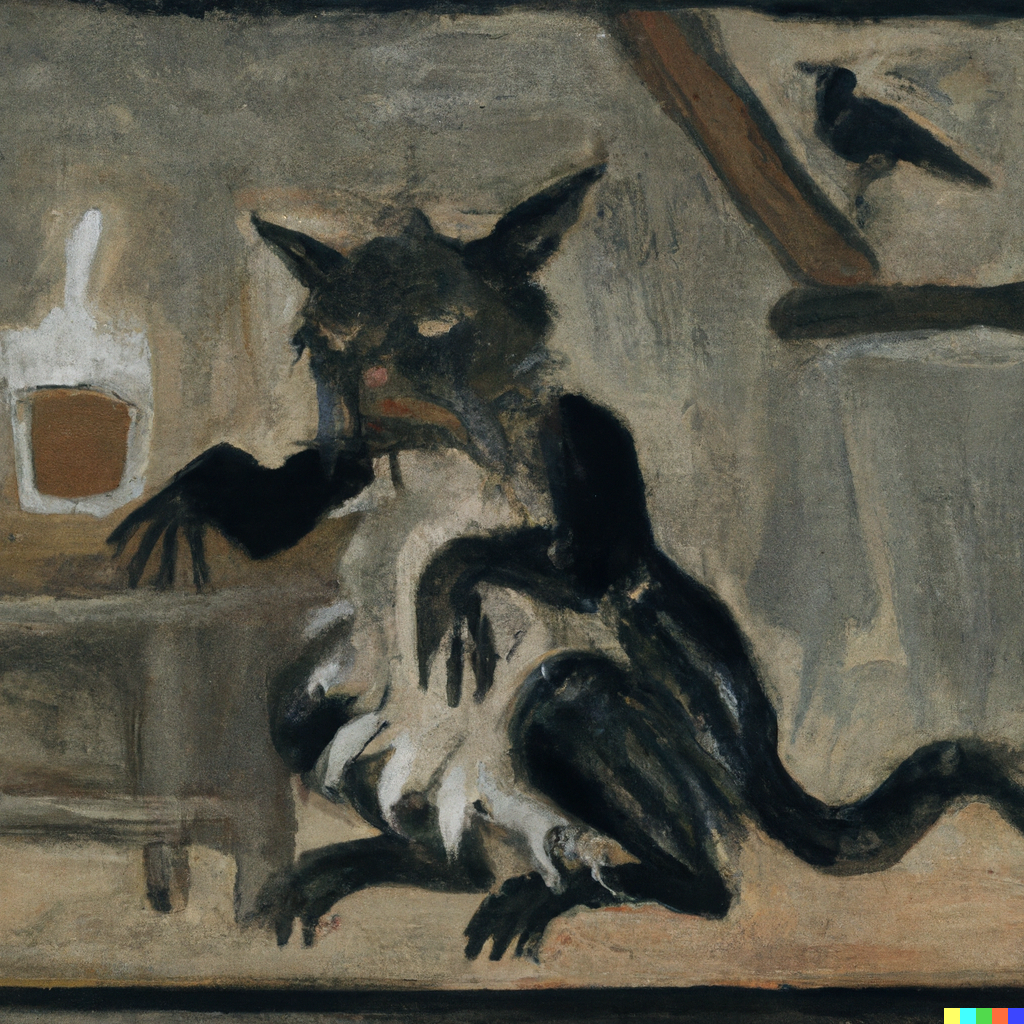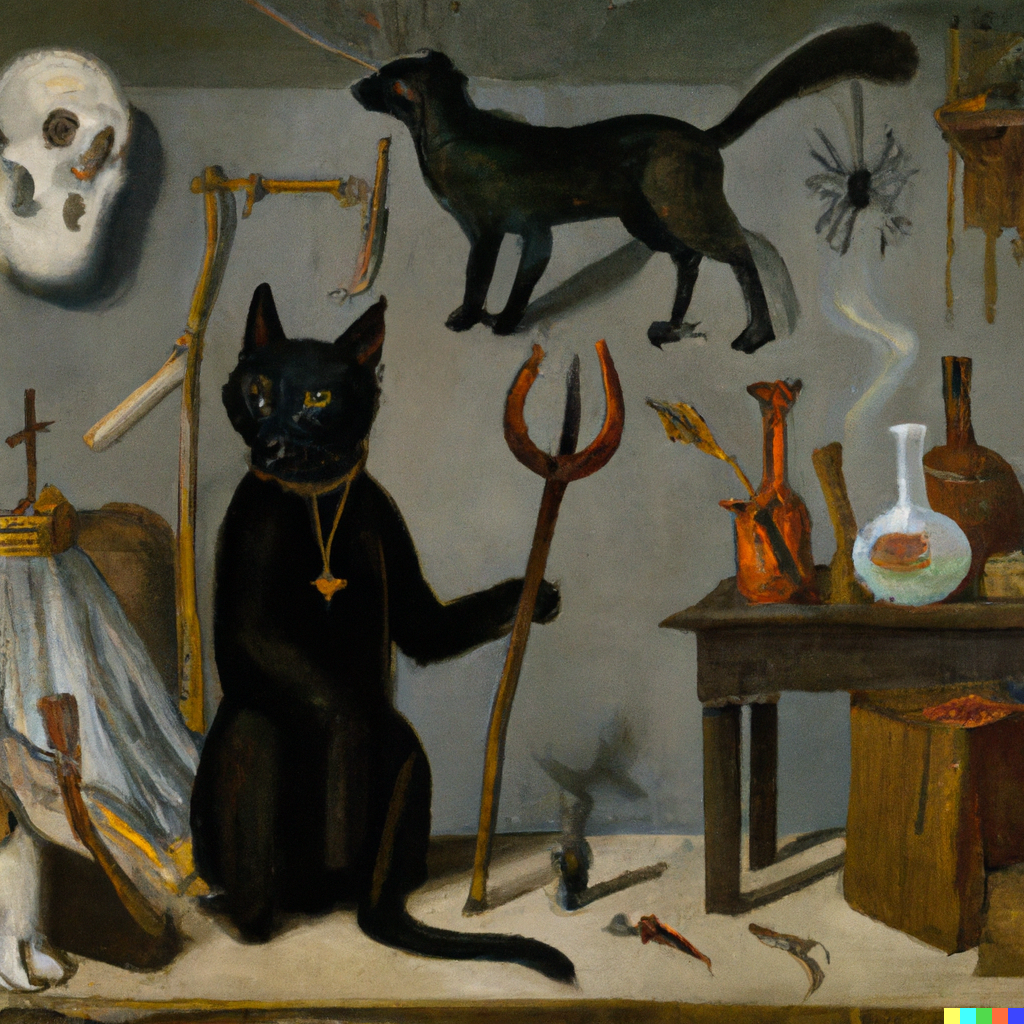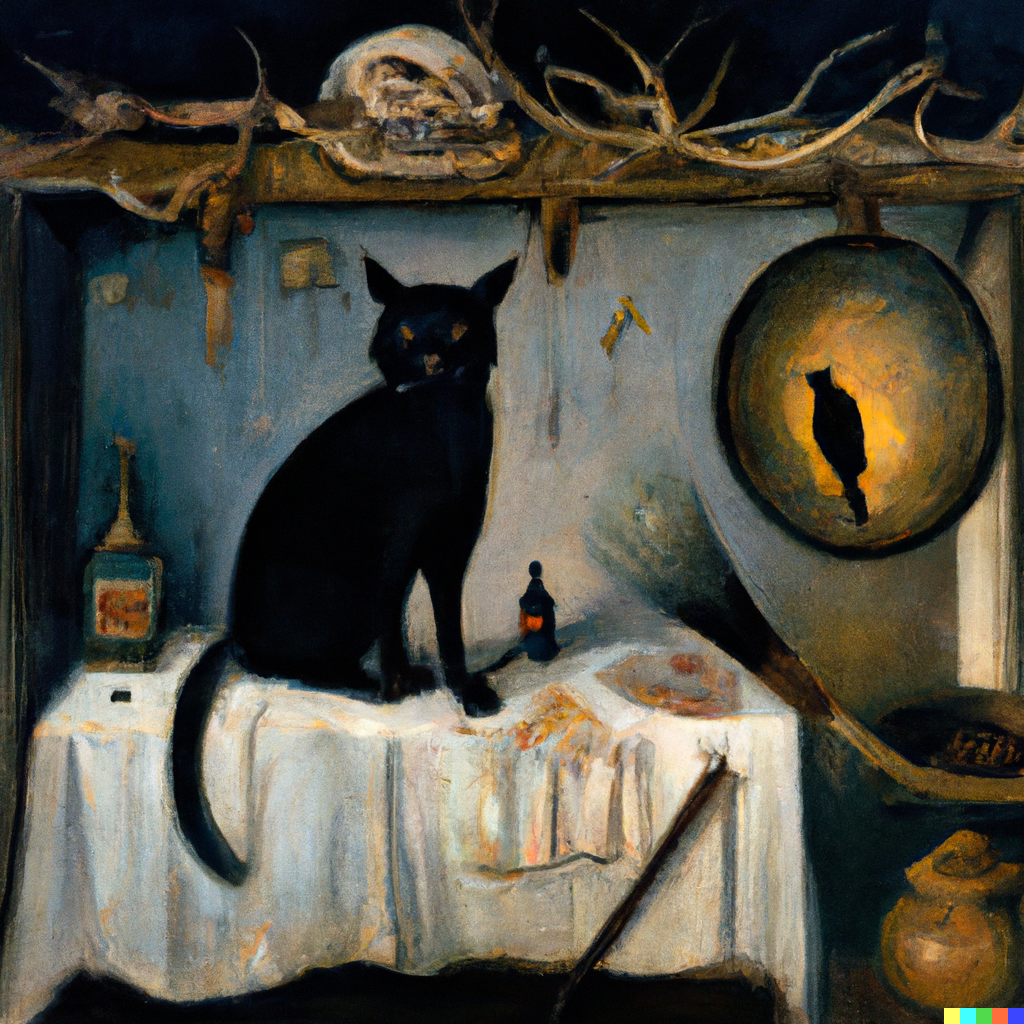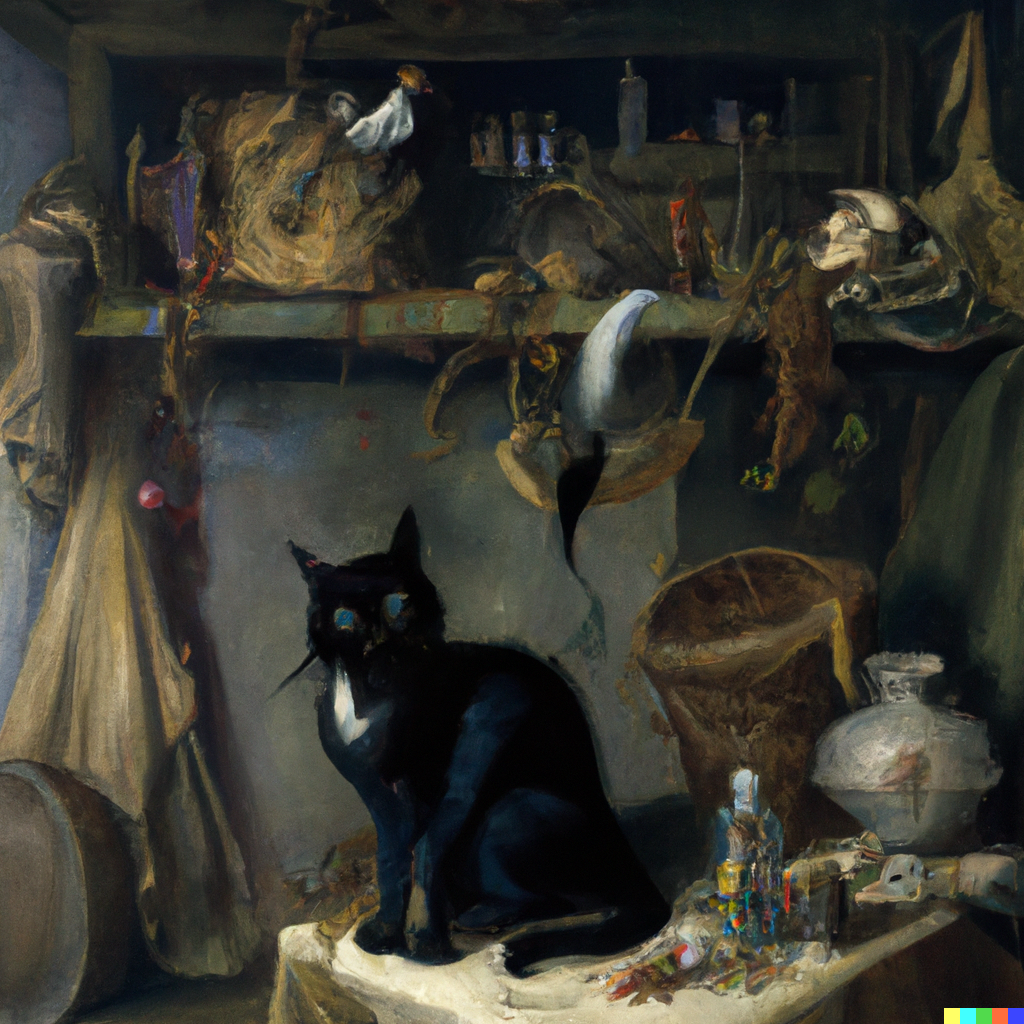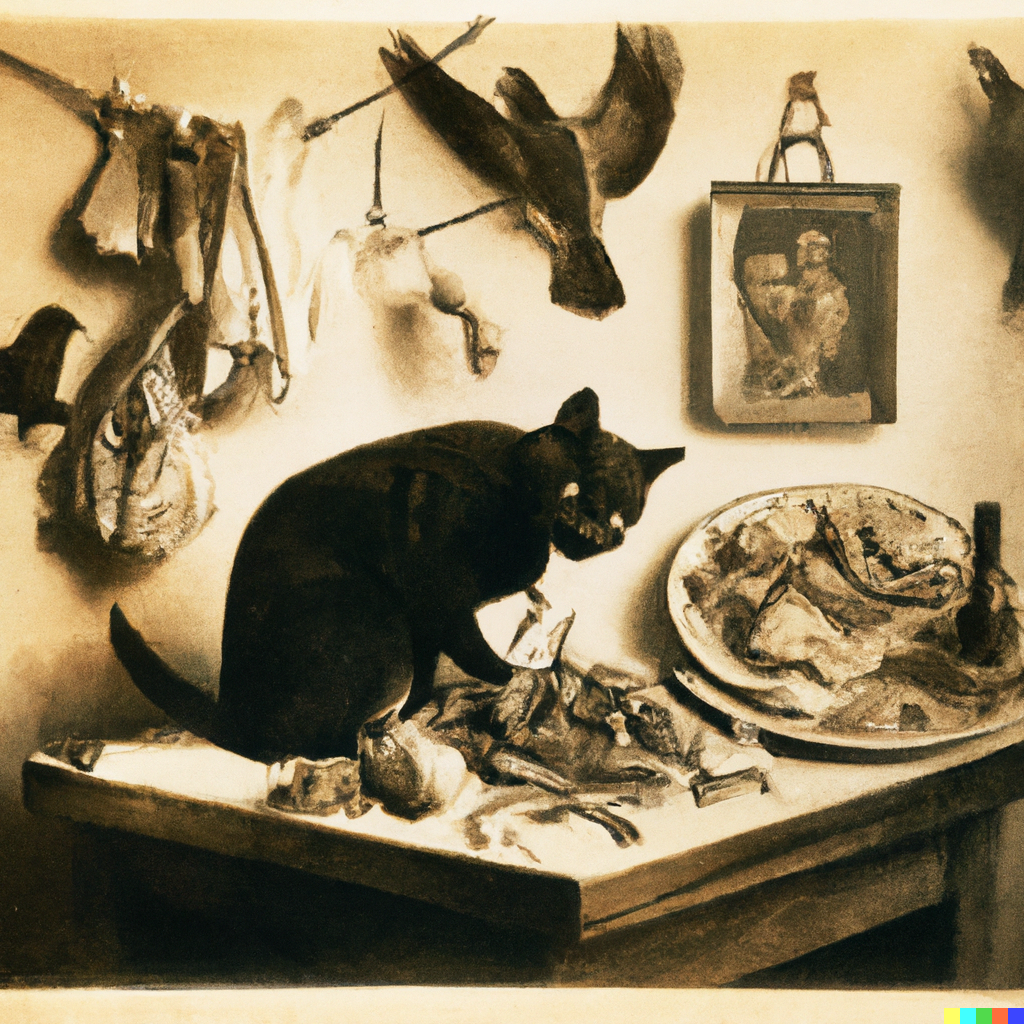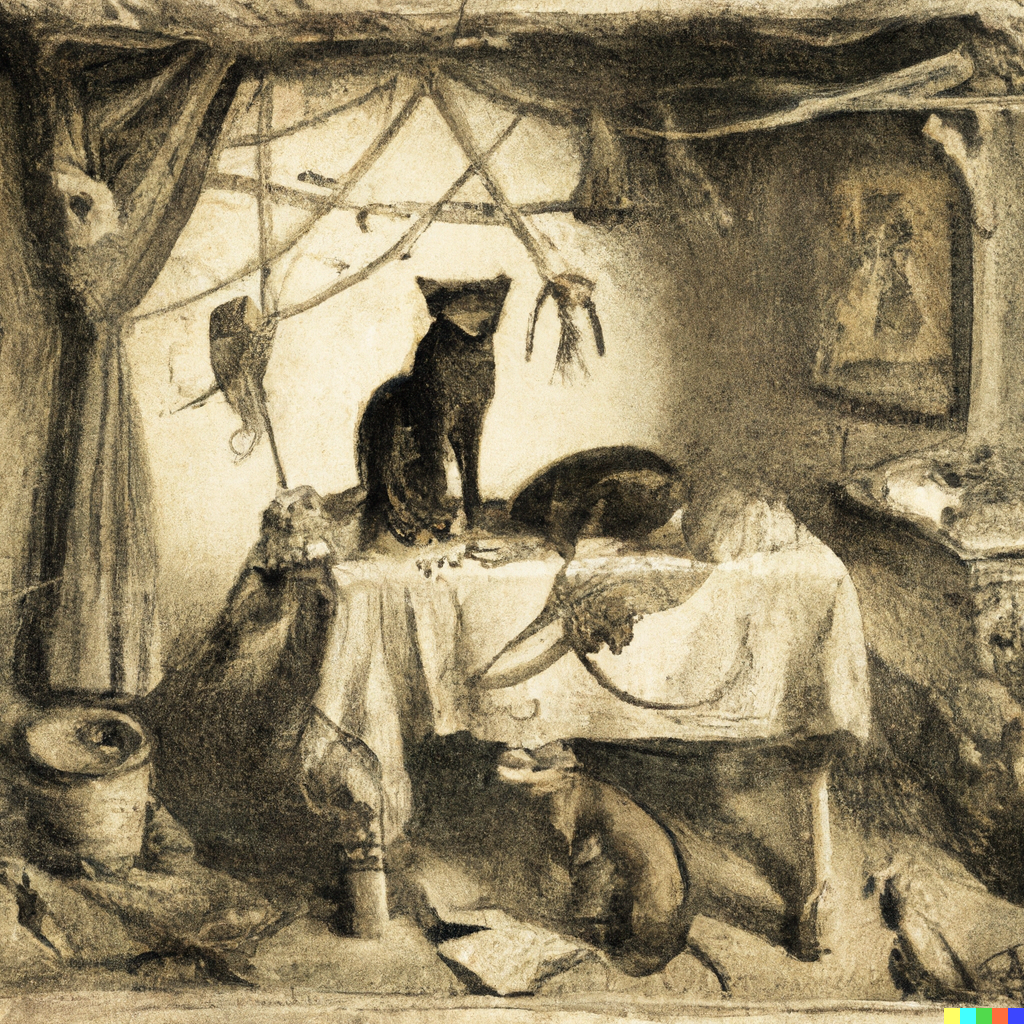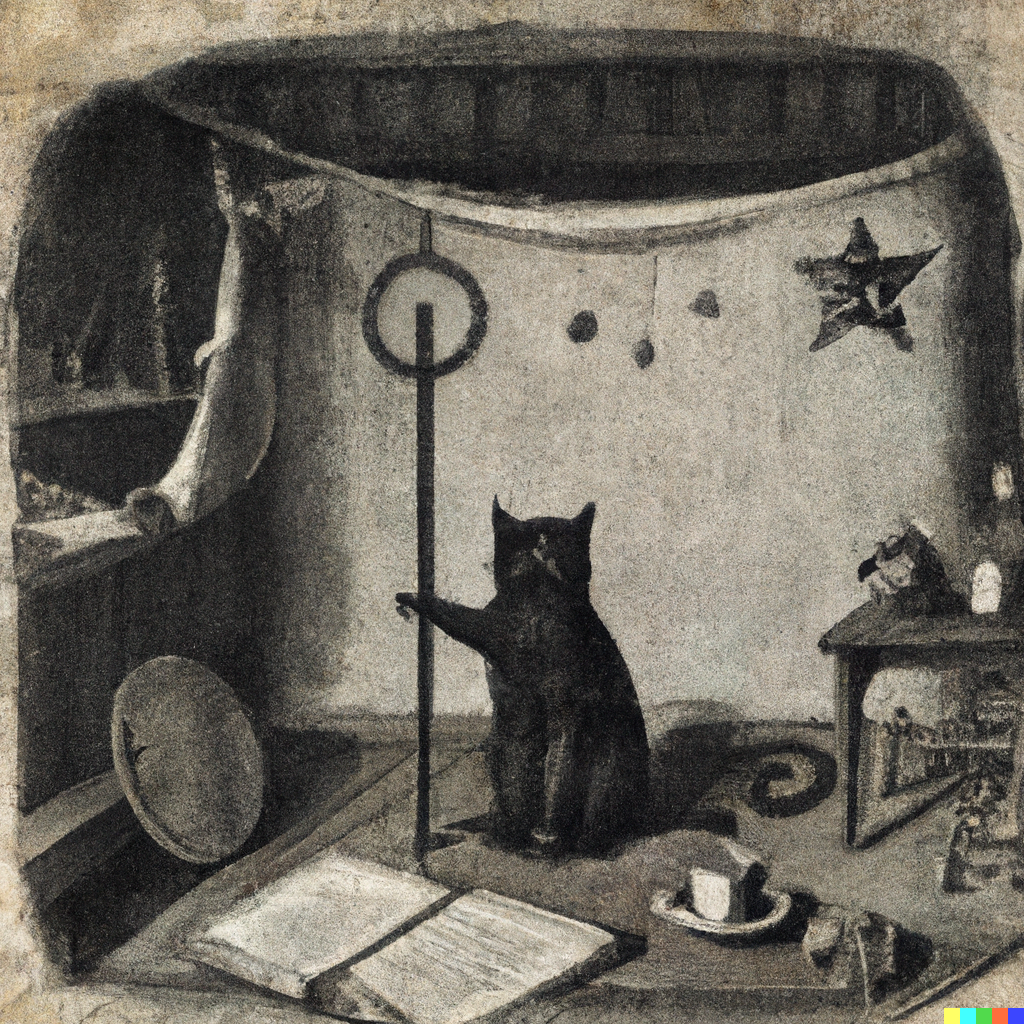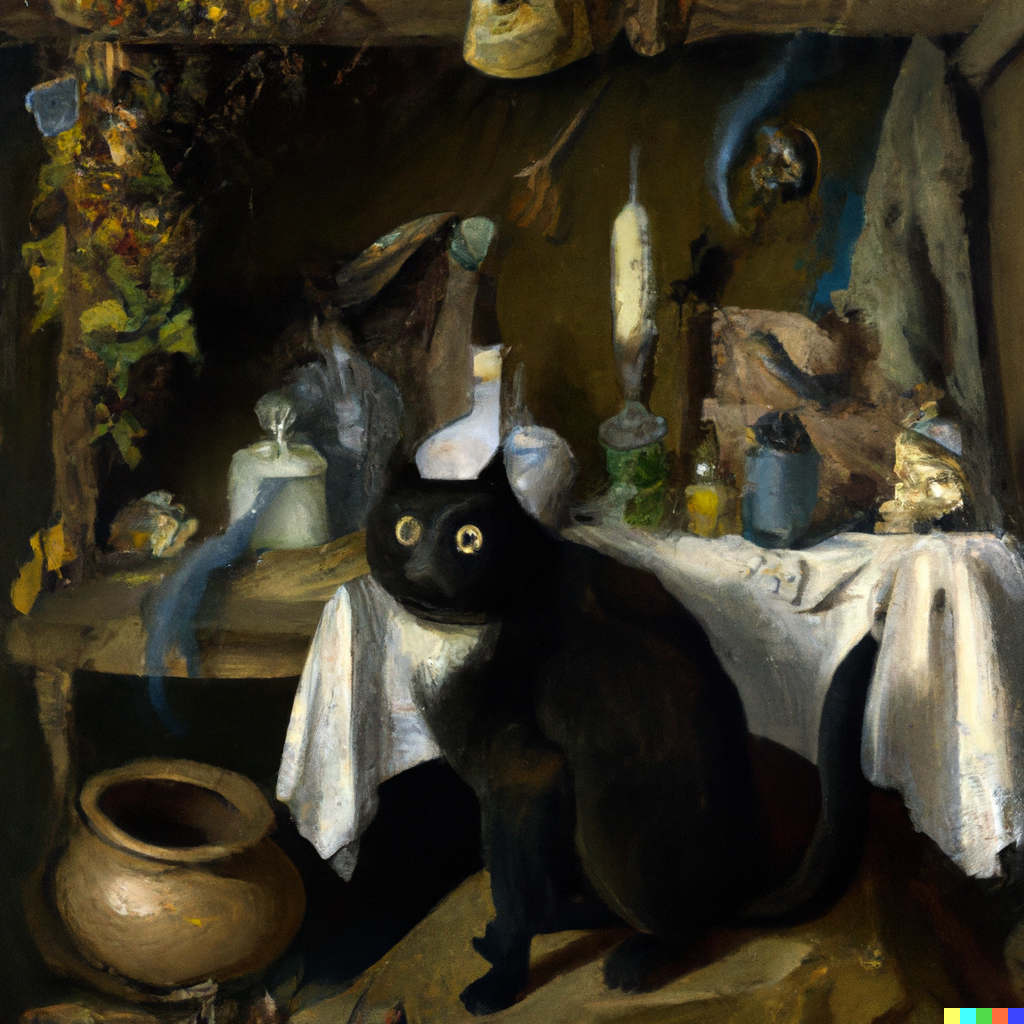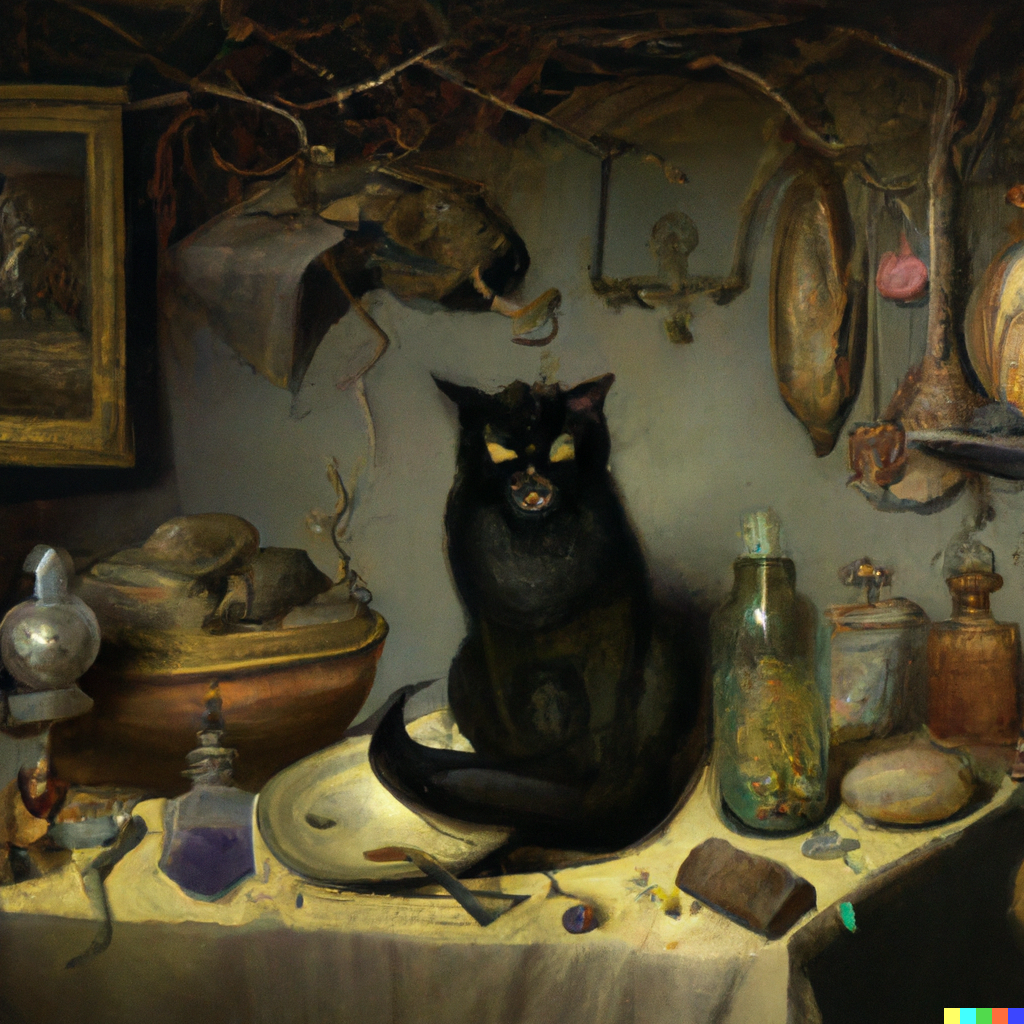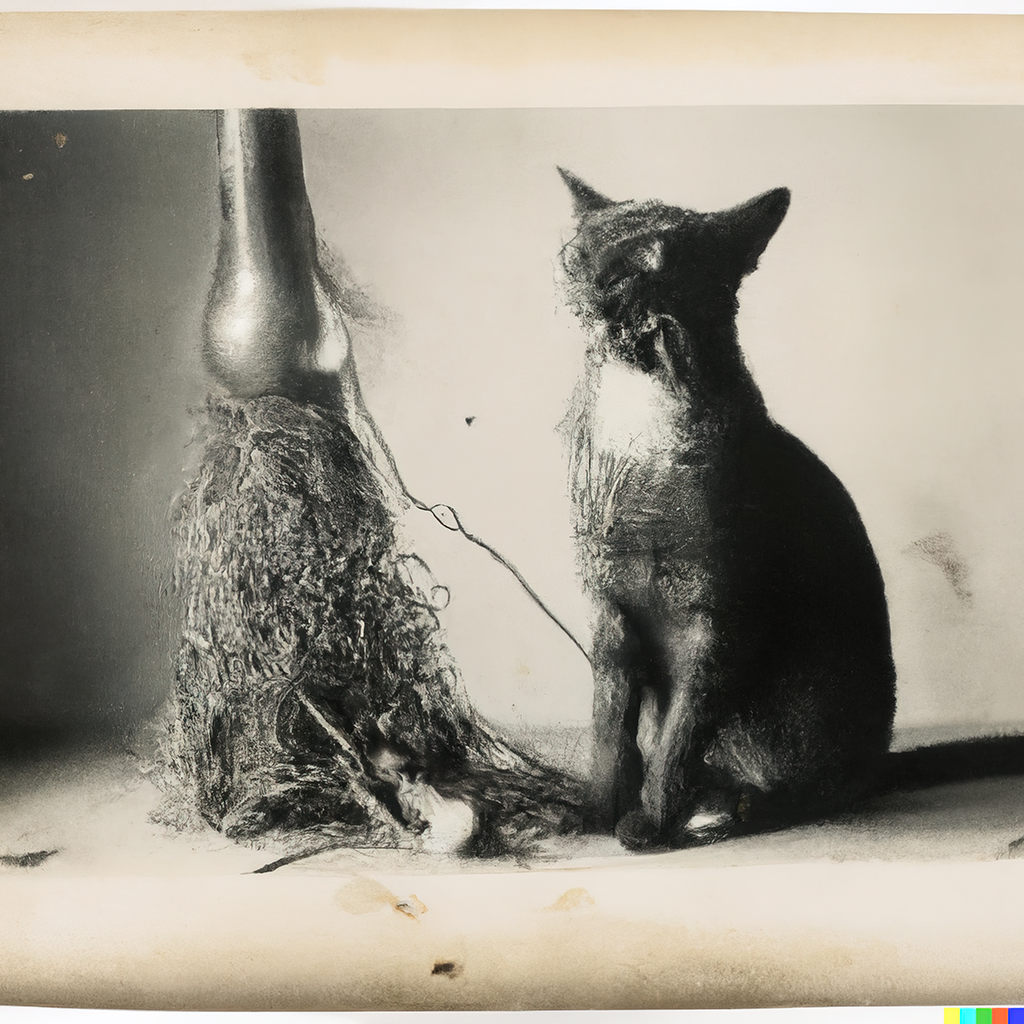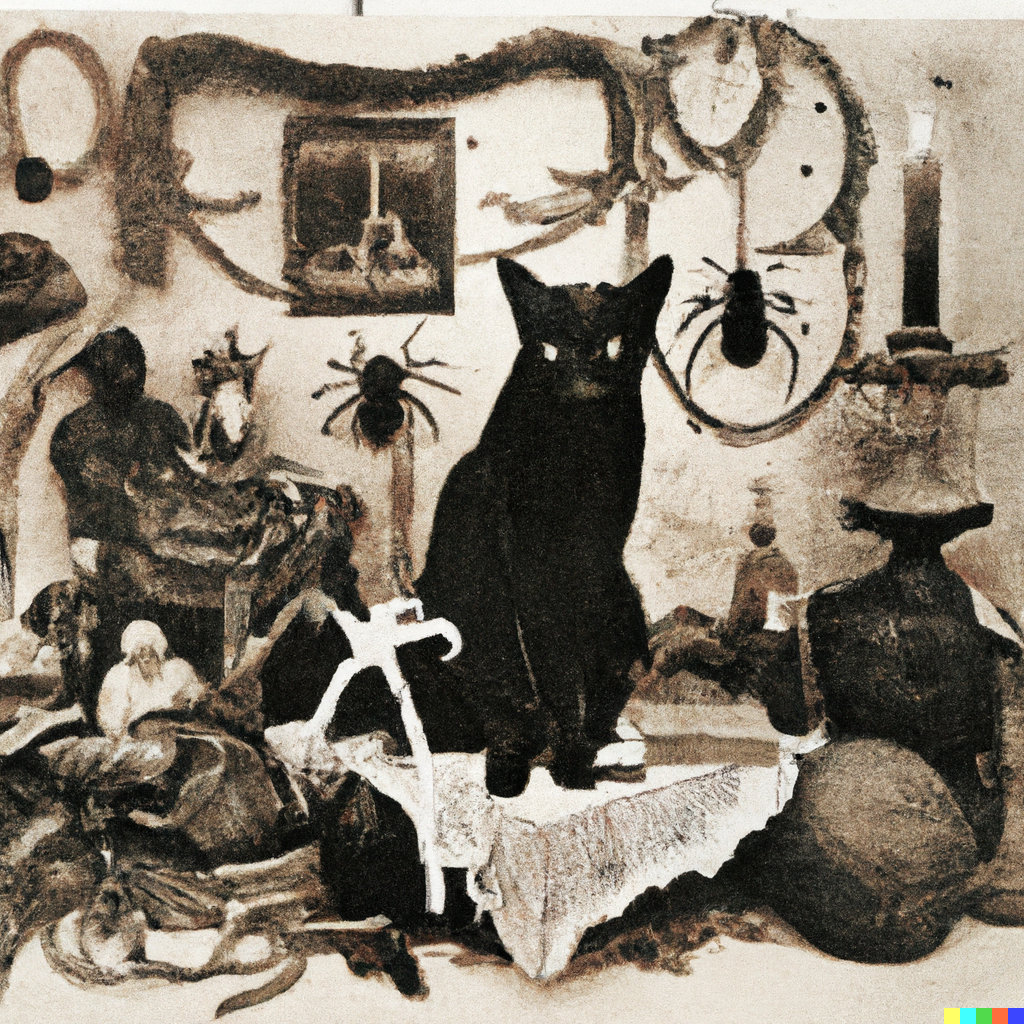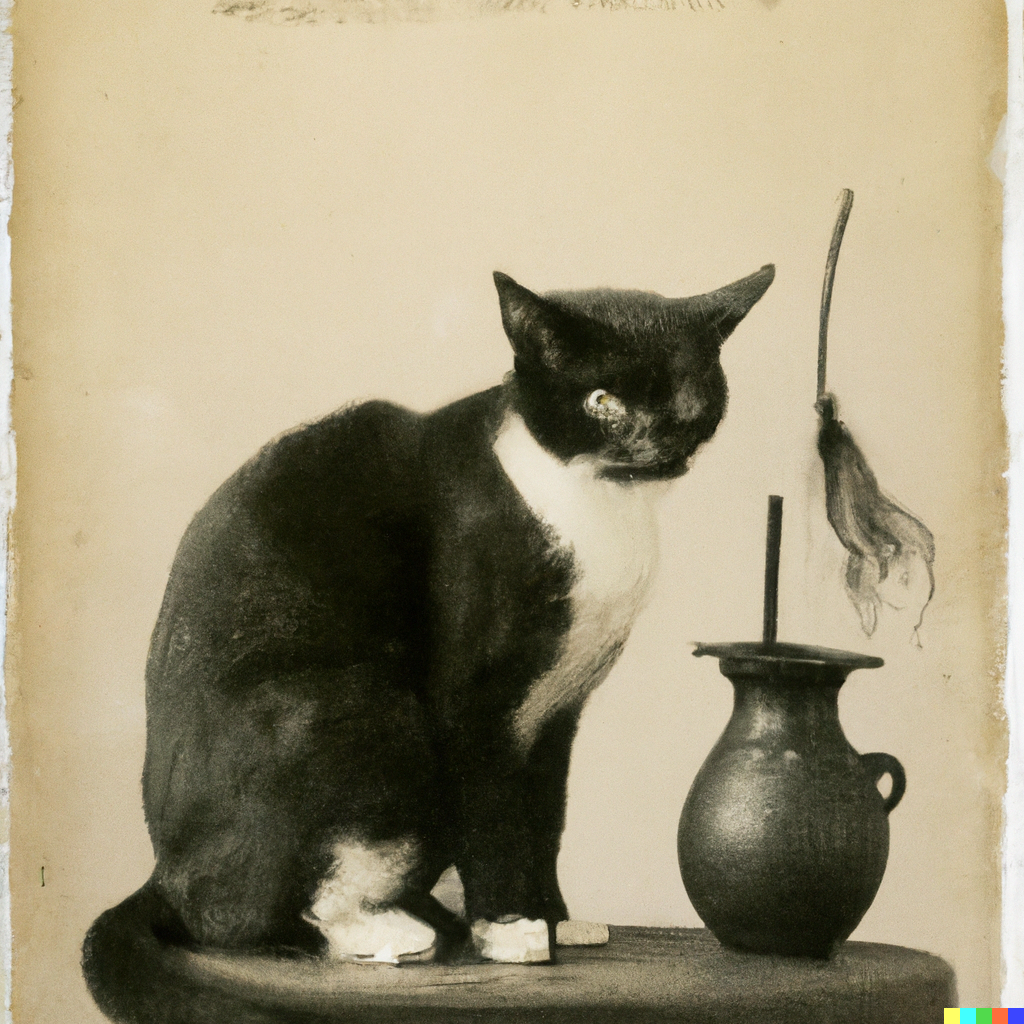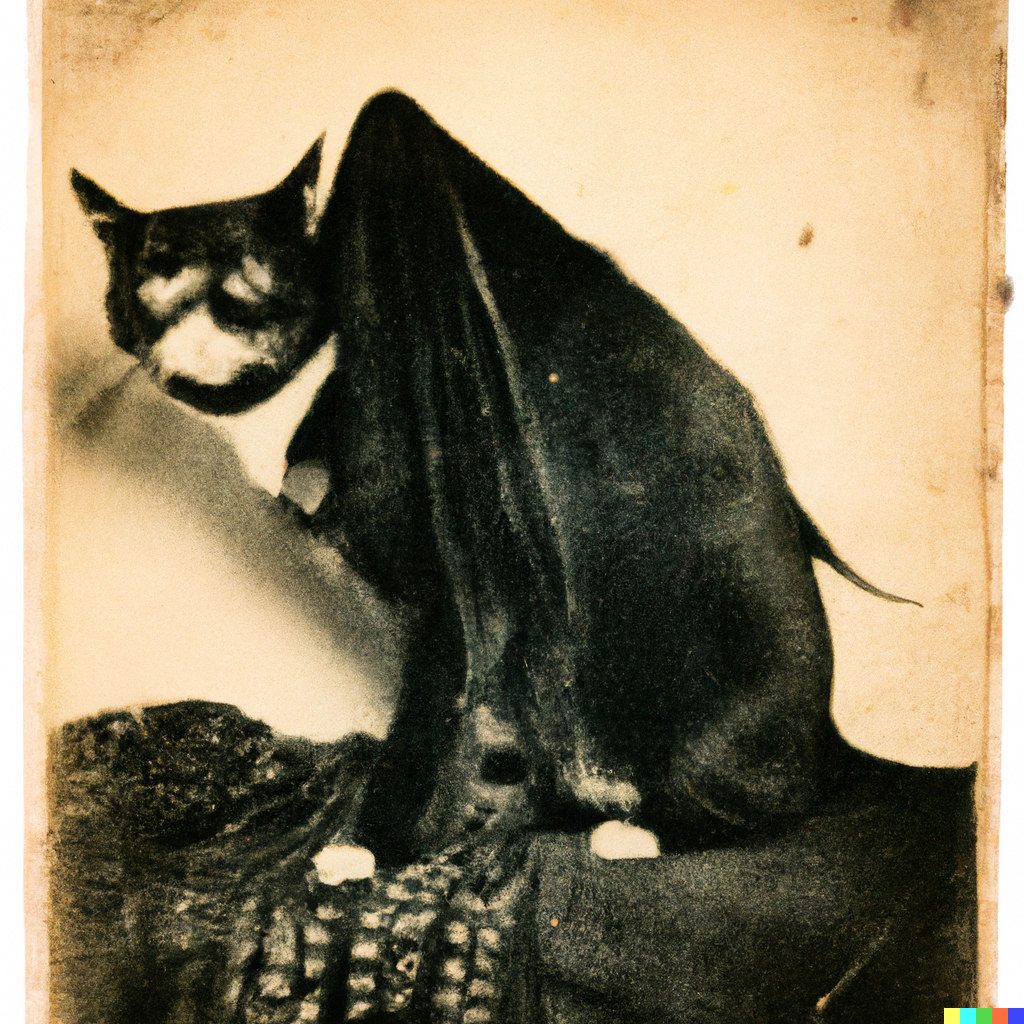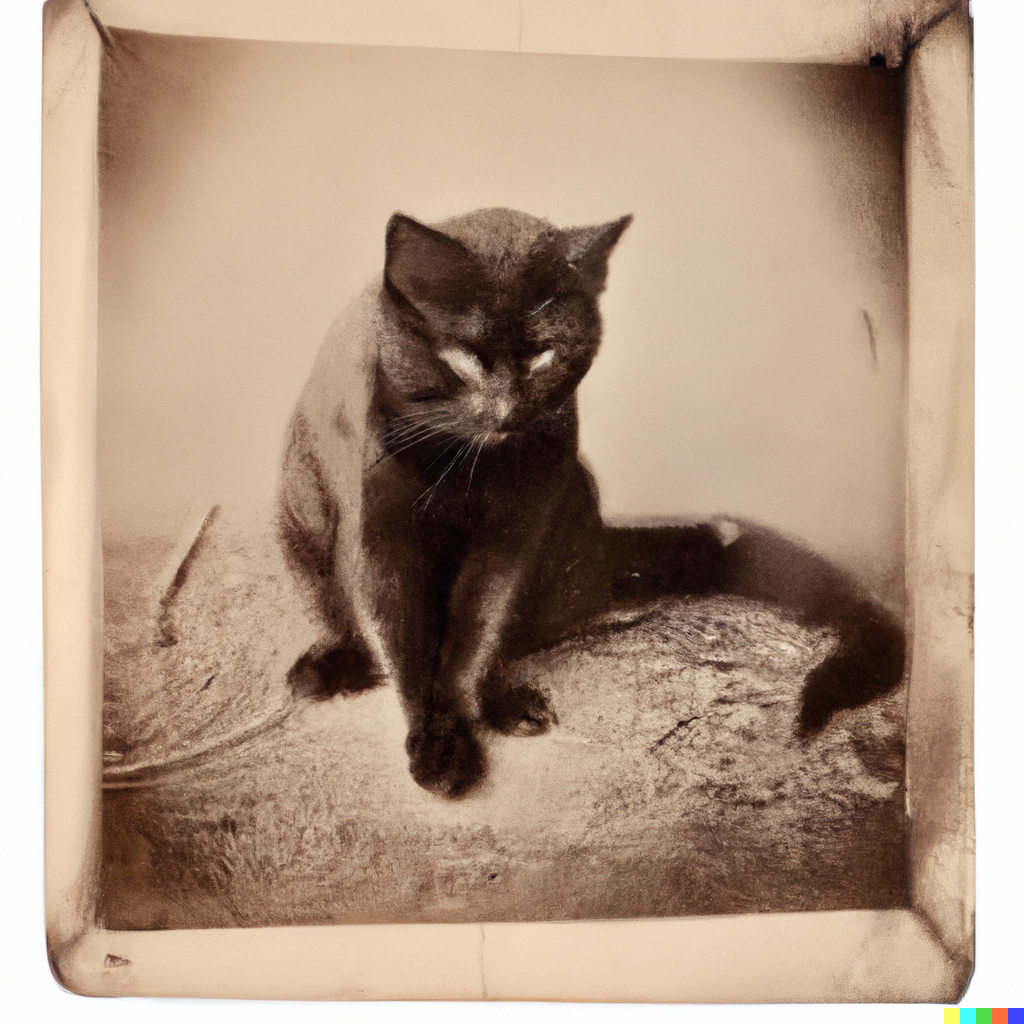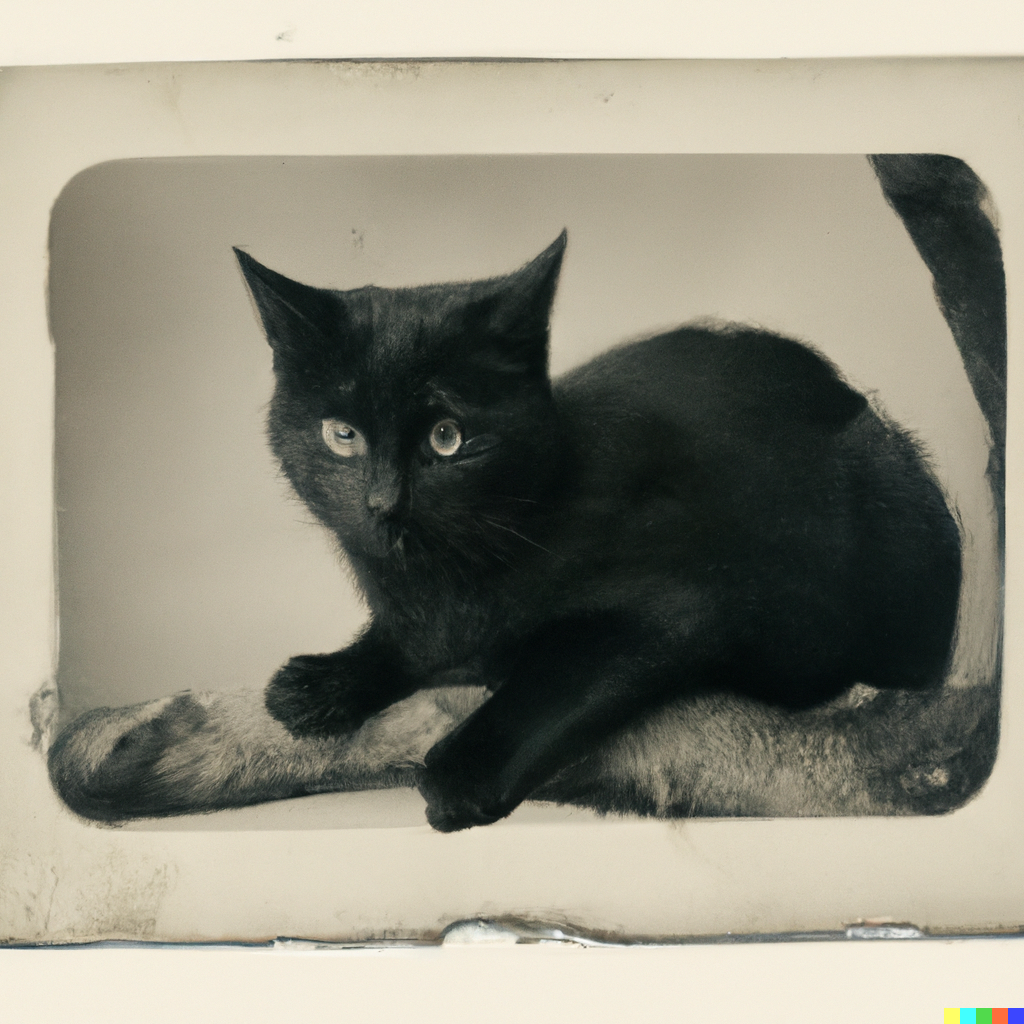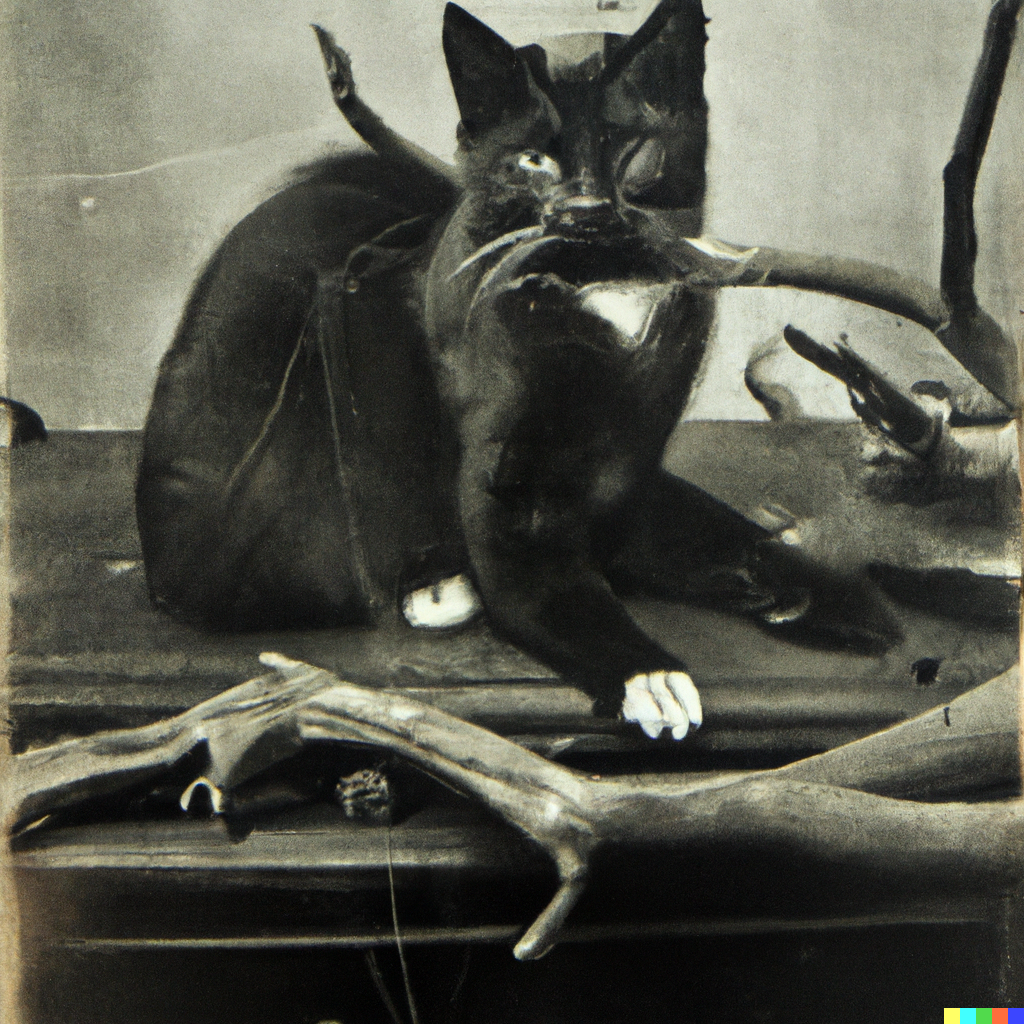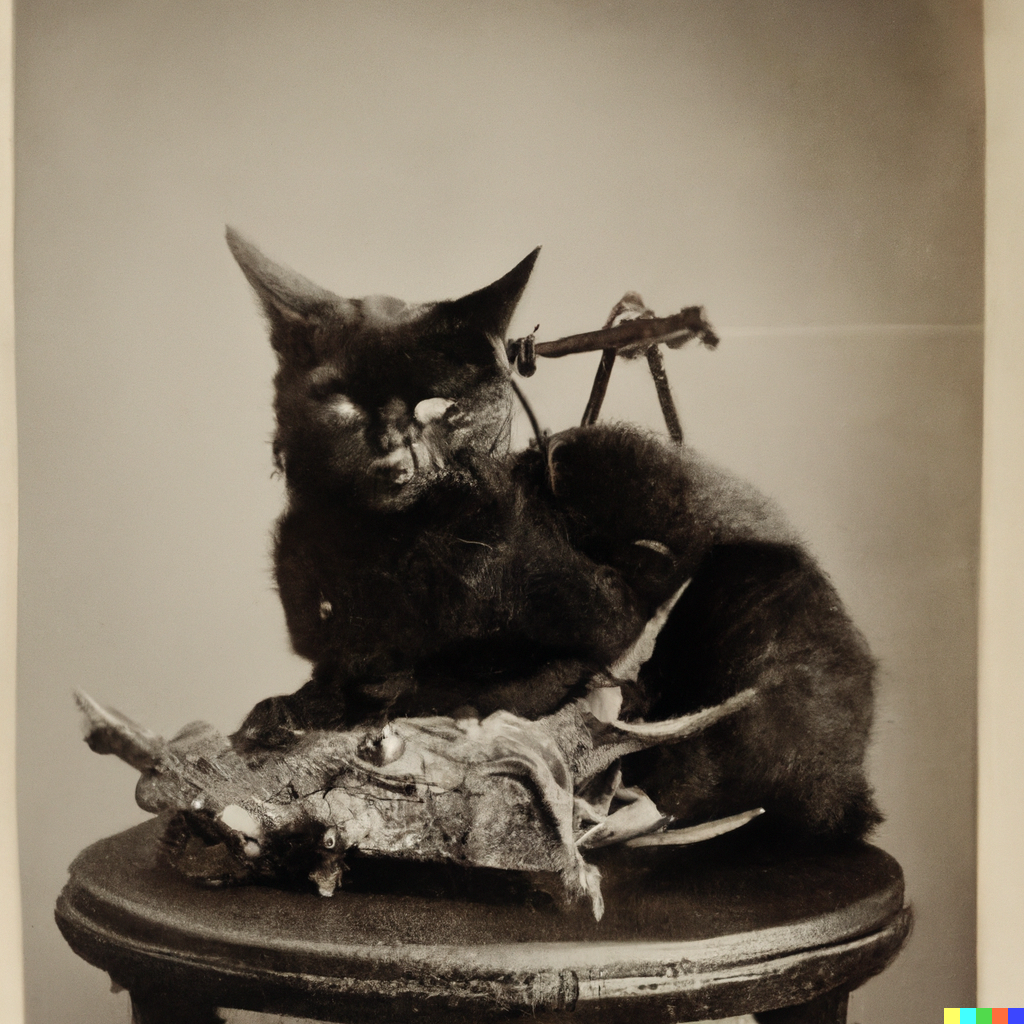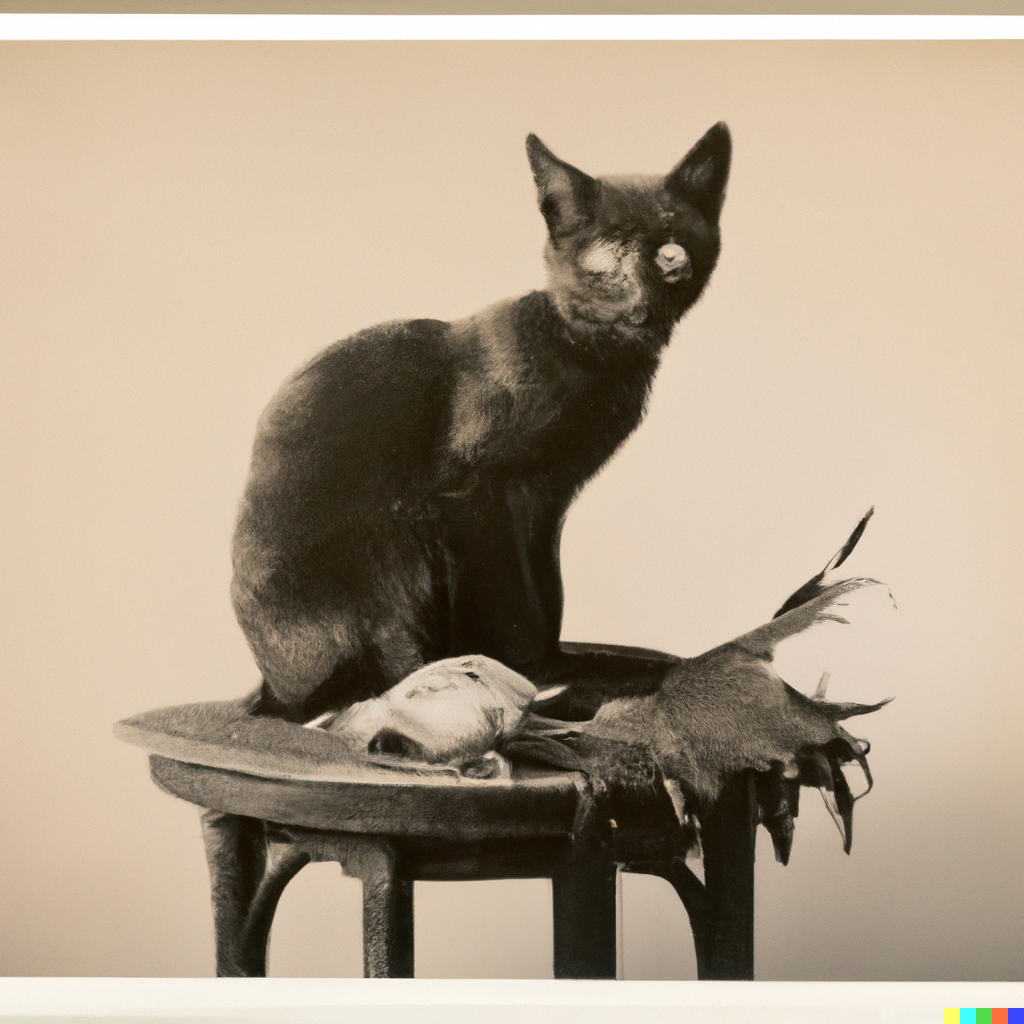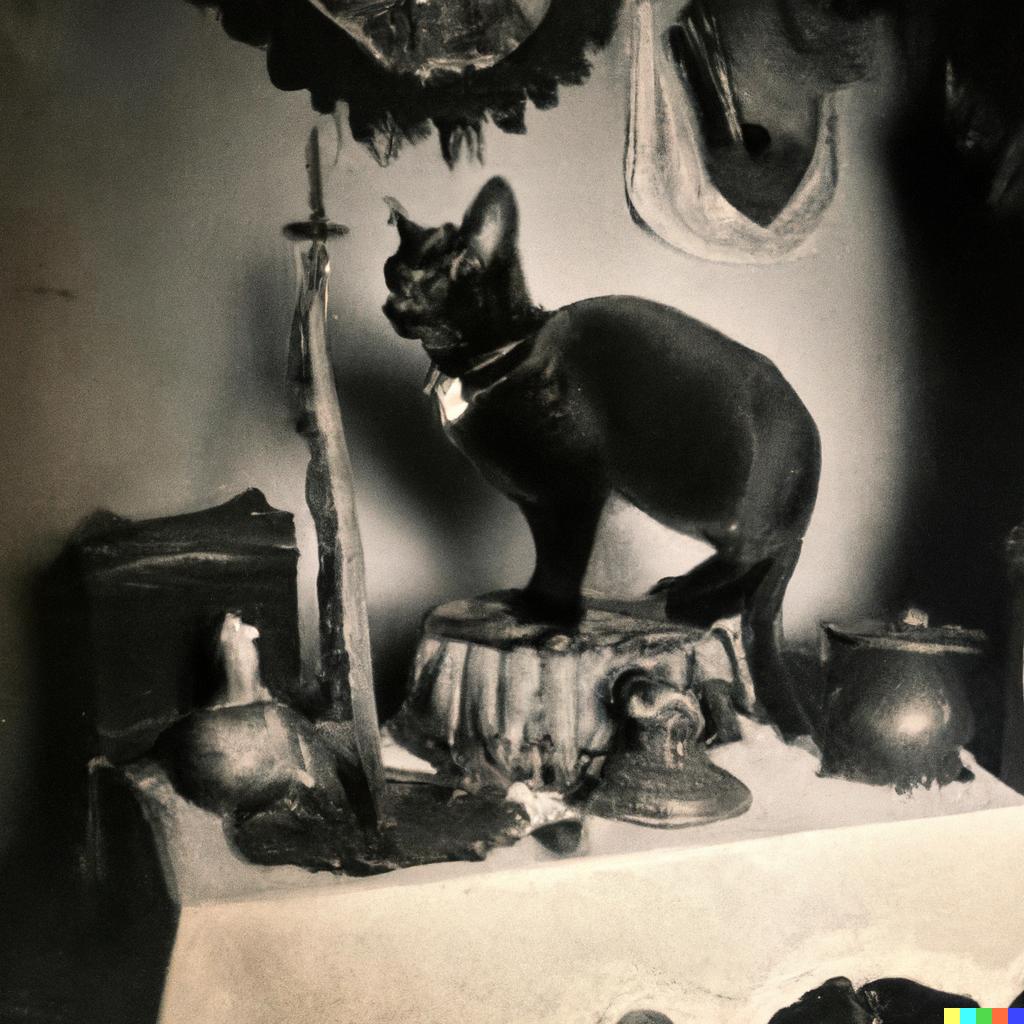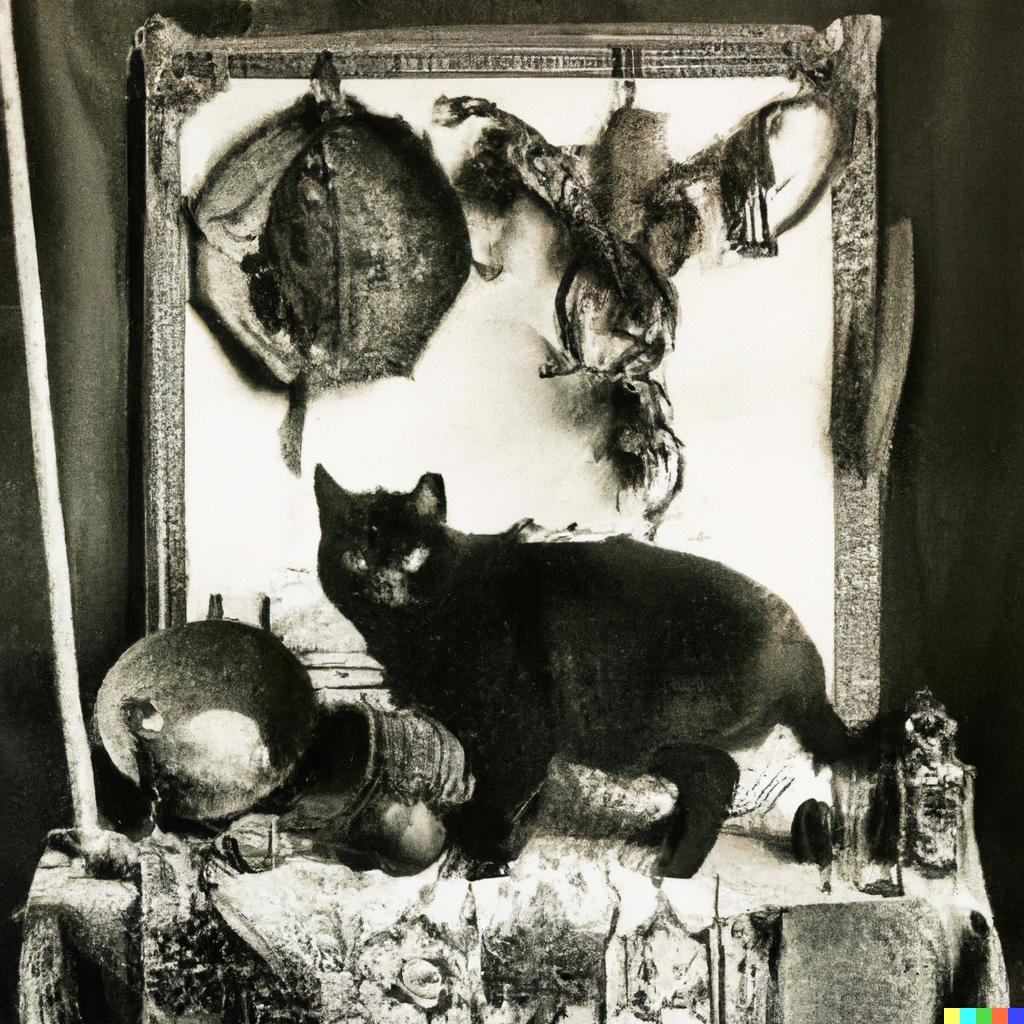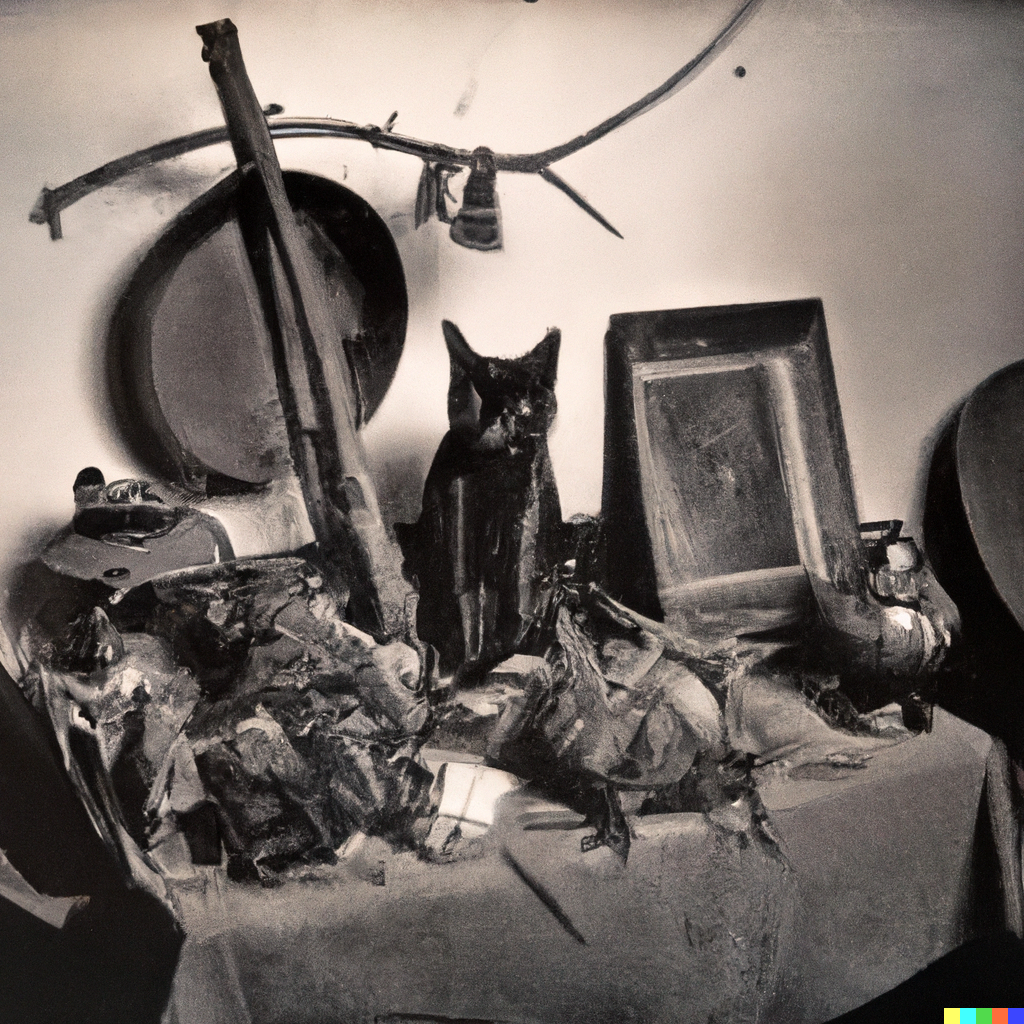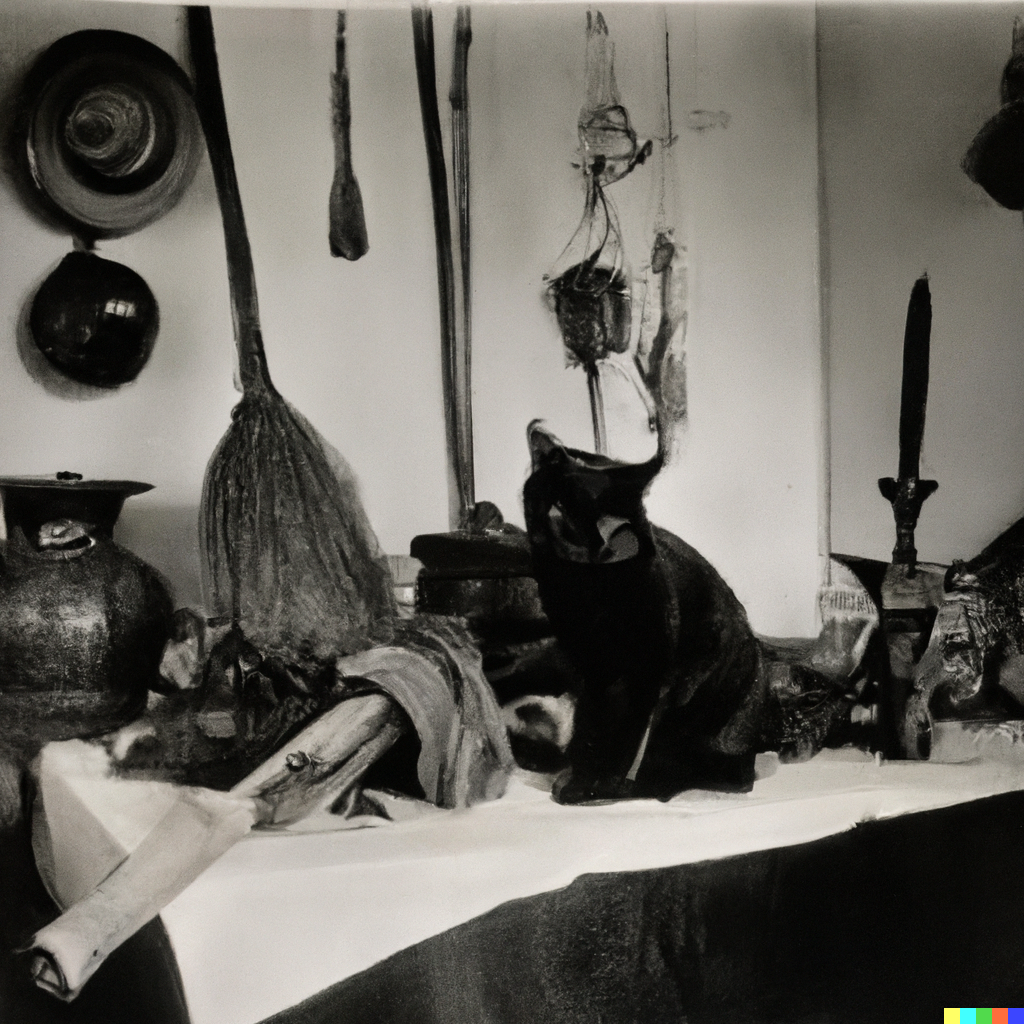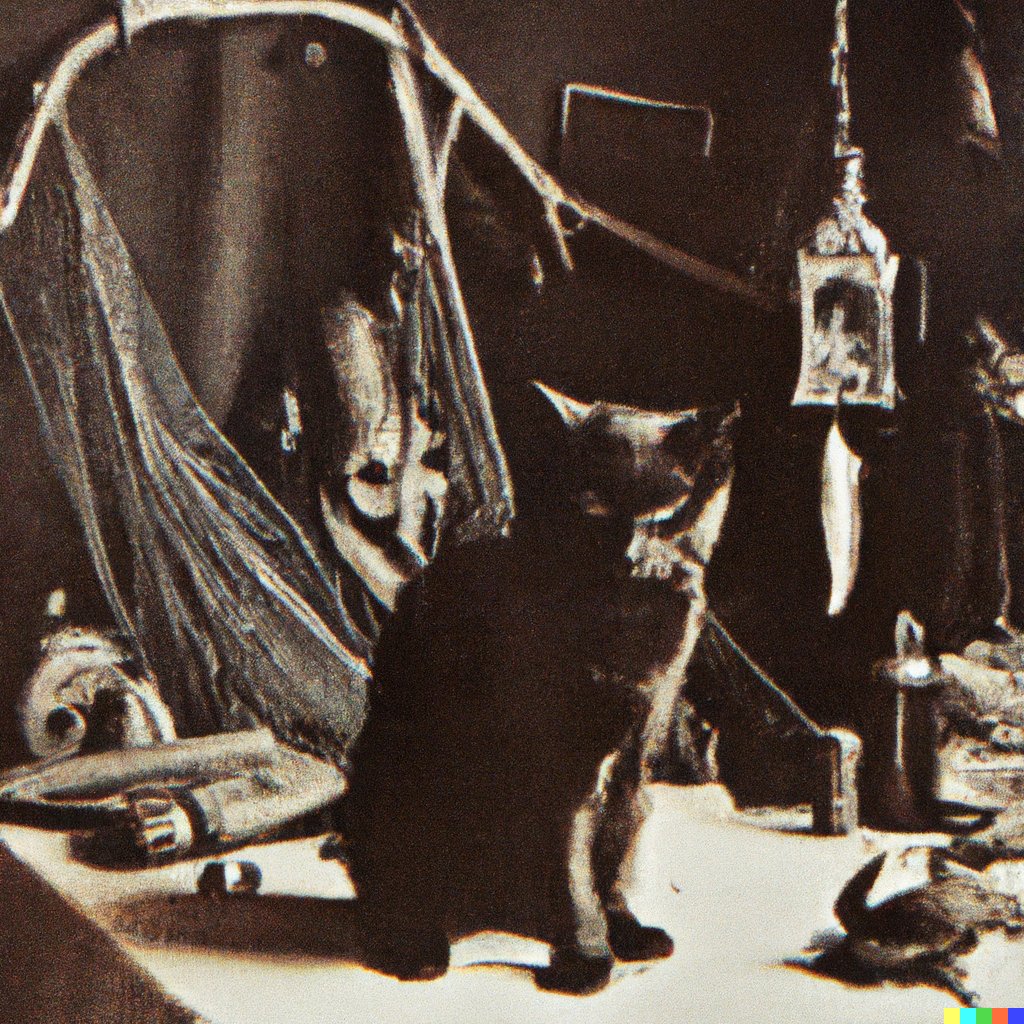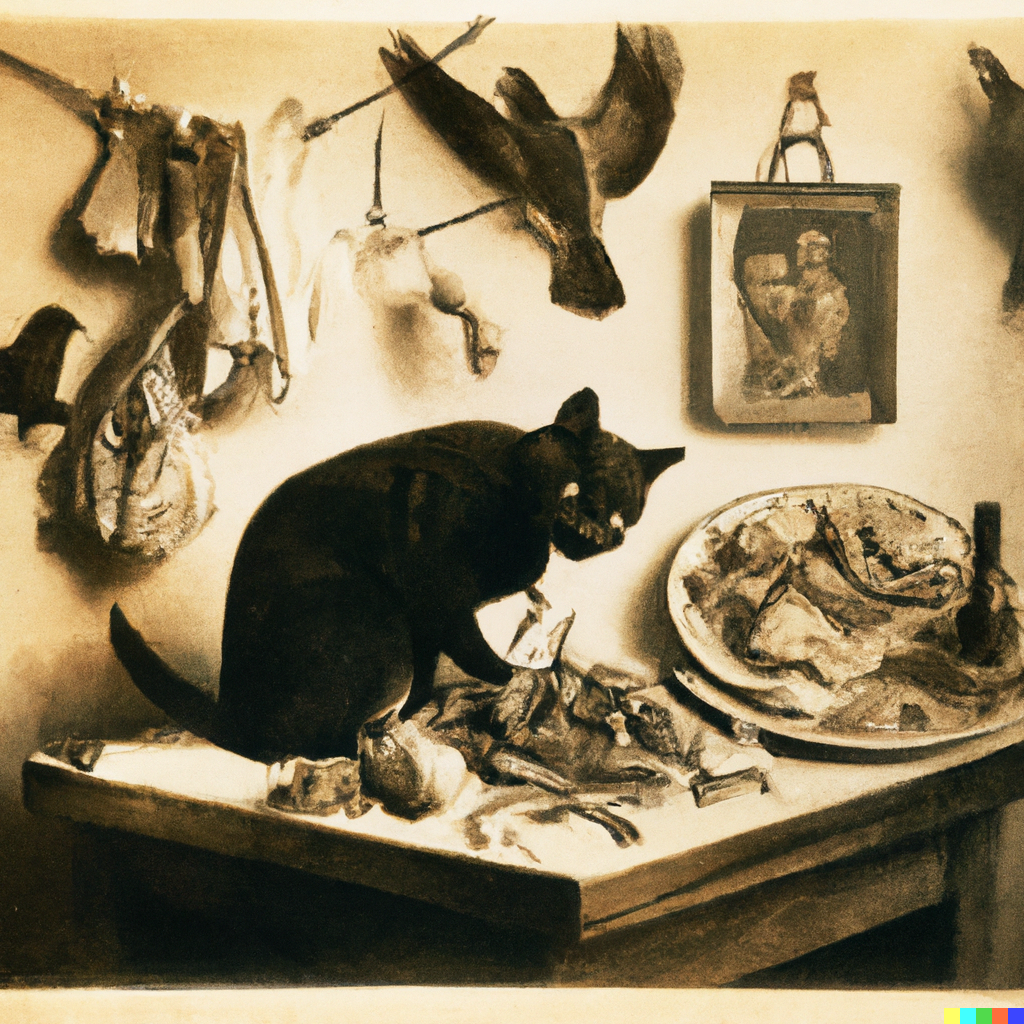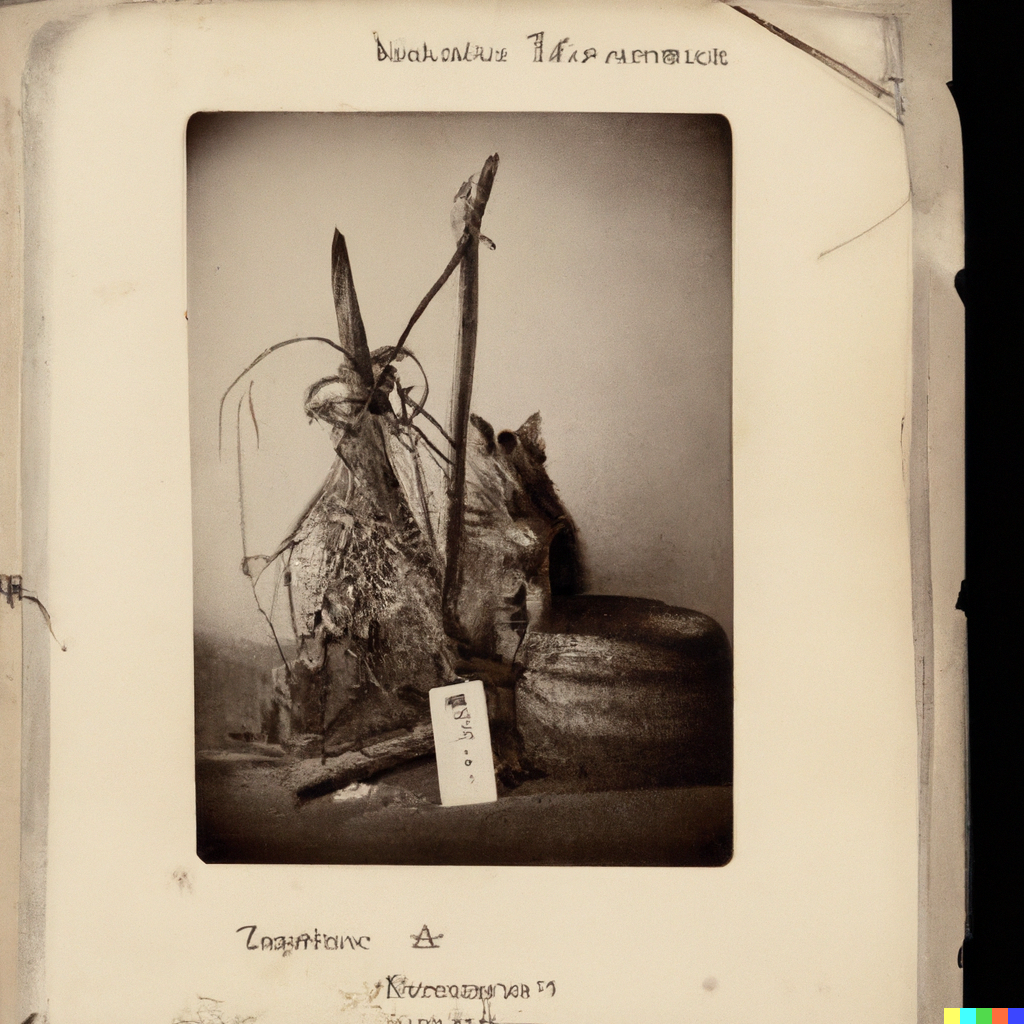The history of the European settlement of North America goes hand in hand with the history of occult practices—particularly witchcraft—on the continent. A large and unfamiliar land with an indigenous population that had recently died out under mysterious circumstances (now of course known to be largely due to disease brought by contact with Europeans) and in which esoteric movements were tolerated was fertile territory for individuals and groups with practices of worship at the edges of Christianity and even beyond. While at the archives at the Germantown College Archives in New Germantown, New Jersey, I recently had an opportunity to visit the noted Witchcraft Collection. Visually, the record is dominated by a peculiar obsession with cats reputedly engaged in witchcraft in the “Mosquito State.”
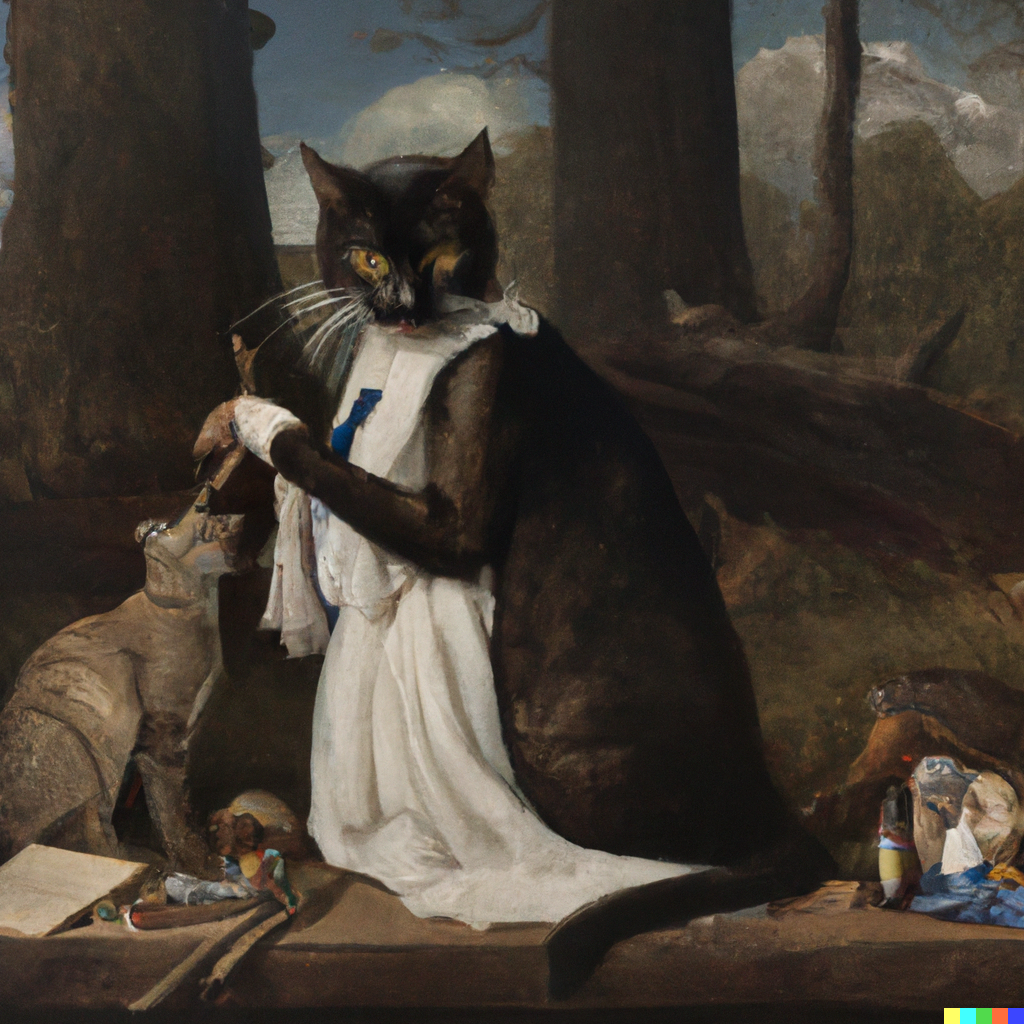
A wealth of paintings and photographs document the obsession with these animals and their connection to the occult in the state and I am delighted to share them with you on this Hallowe’en since so many of you have reacted positively to the ones I have posted on my Instagram account.
Cats are the most popular pets in the world, and certainly on the Internet, but the history of domestic felines is inevitably linked to the idea of the witch’s familiar. Cats are mysterious creatures (I suppose) that are active at night (not mine) and often, especially when in heat, make otherworldly sounds (Roxy is guilty as charged). Given their further association with femininity, they wound up historically linked with witchcraft.
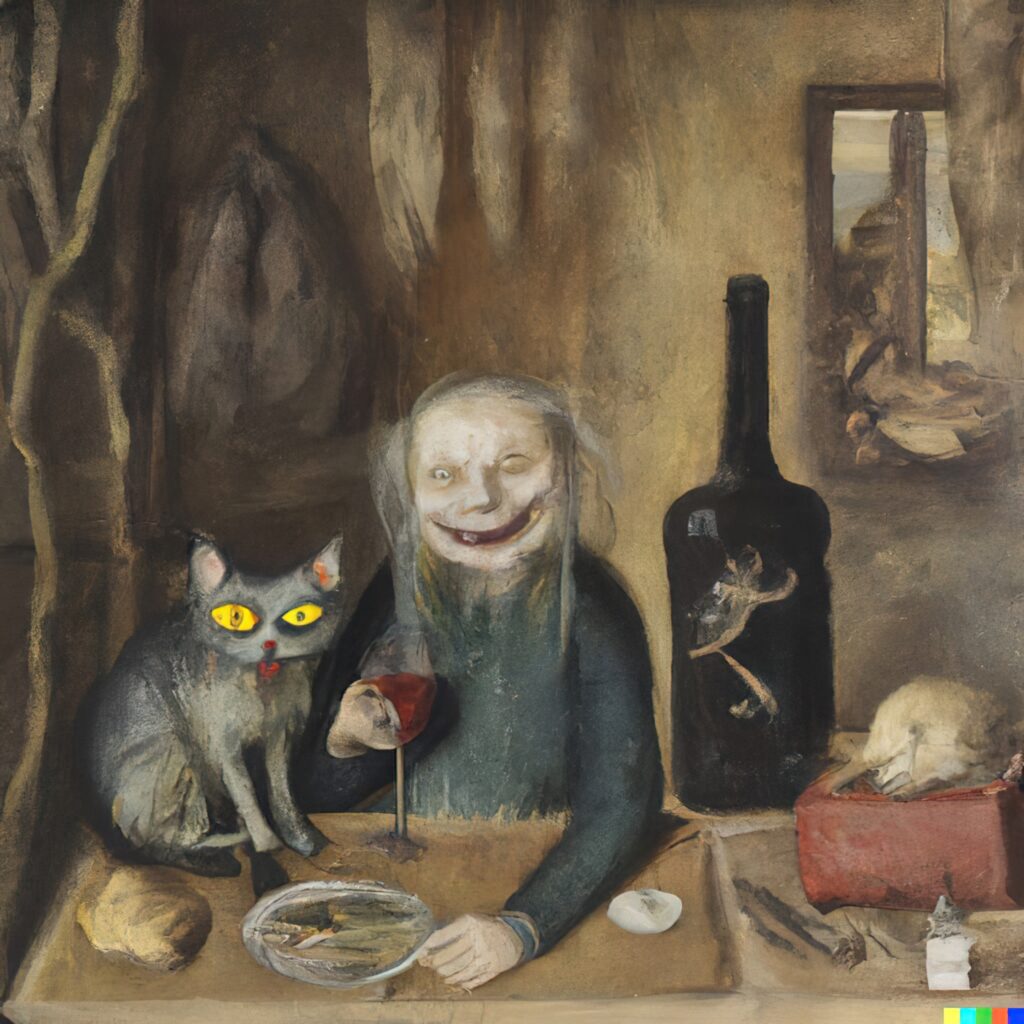
New Jersey, unlike Massachusetts, was not settled by a single, religious community, thus diverse faiths were tolerated here. Moreover, the colony was not originally British but originally was composed of New Sweden (by the Delaware river) and New Netherlands (by the Hudson), becoming a colony only in 1664. A land for free-thinkers, the colony embraced Huguenots fleeing from France, as well as Baptists and Presbyterians from Ireland and Scotland, as well as other faiths while Quakers crossed the Delaware from Pennsylvania and brought their beliefs here as well. The Presbyterian leader of the First Great Awakening, Gilbert Tennant (1703-1764) came “to blow up the divine fire lately kindled there.” Thus began the colony’s early affliction with the supernatural, something made vividly clear in a young Benjamin Franklin’s accounts of the Mount Holly Witch Trials in 1730. If witches were a source of pre-revolutionary terror, by the late eighteenth century, archivist Alistair Cailleach-Crone told me, the burgeoning New Jersey merchant class in New Jersey began to commission portraits of their cats as witch’s familiars or “witching cats.” There is little documentation left of this fashion, save for this text by one Pieter Heks, 1783:
There are, and ever have been, cats and other felines, who converse Familiarly with the Spirit Realm and while some say they thus receive Power to both hurt and deceive, others claim them as happy mediums who, by their very being, keep a home free from plague, louse, and the lyke. Others, particularly, the wives of merchants in our land, keep these animals dear and hold them the pride of their house even, as the fashion holds, having portraits made of them.
Odd as it may seem, the best artists of New Jersey’s first decades as a state were involved in this work, as well as artists from the neighboring states of Pennsylvania and New York. After scolding sermons and threats from Presbyterian ministers, the fashion of Witching Cats fell out of favor among the wealthy, who soon went back to commissioning portraits of themselves, their children, their families, and noted racehorses. More than one artist was relieved. Famed painter Benjamin West, whose paintings of the subject have been lost, wrote unaffectionately in his notebook: “Damned cats and their owners. To the devil with them! These Jersey brutes love their animals but to have them sit for you would try any man’s patience. And half do seem to be possessed by the devil. I will never lose the scars from these accursed creatures, all claw and fang.”
By the 1820s, however, the Witching Cats found a resurgence in the vogue for alternately amusing and frightening paintings made by self-schooled Primitivist (or Naïve) painters in rural areas, notably the Pine Barrens. Whereas the previous paintings had largely been portrait-like in nature, memorializing specific favored pets, new paintings were often sold by itinerant painters as well as peddlers who purchased them elsewhere to sell from the back of their carts and wagons. This work—of varying quality, sometimes remarkably comical—comprises the bulk of the collection at Germantown College. More than one observer has noted that the cats in the paintings of both periods are dominated by tuxedo (or piebald) cats, which were a common “breed” in New Jersey at the time. As Benjamin Franklin (who owned an angora) wrote in 1745, “In the dark, all cats are gray, but in the light, only the cats of New Jersey are piebald.”
The fashion again lasted about a decade, and toward the end of the period, a young painter from Speertown, in northern New Jersey named Theodore “Red” Baudrons (1810-1910) began a curious series of paintings in which cats were depicted in environments with strange objects that hinted more directly at witchcraft. This series, called “Cats in the Garrett” soon became controversial and he wound up leaving for New London, Ohio where he lived and worked on a farm owned by the Townsend family and depicted the wealthy farmers of the area instead.
If primitive, compositionally Baudrons’s art evidences an interest in the phenomenon of “the Cabinet of Curiosities.” Precisely where Baudrons learned about the artifacts and symbolism used in witchcraft is unclear, although there have been suggestions it may have been from his sister Hattie Cunnan or perhaps his mother Diana both of whom were spoken of as “cunning women” who could cure many aliments. Baudron, about whom little more is known, also left a few drawings behind at the Townsend farm, which are mixed with the paintings in the gallery above.
Again, the fashion for Witching Cats died only to re-emerge in the years immediately after the Civil War, this time in photography. One Thomas “Namir” Bastet (he claimed Persian ancestry) set up a photographic studio in West Bloomfield, where—along with the usual photos of widows and their errant children—he took an extensive series of photographs of cats that are clearly within the Jersey Witching Cat tradition although in fairness, some appear to be just ordinary housecats. Bastet, it seems, was both a student and friend of photographer William H. Mumler, noted for his notorious 1869 photograph of well-known cat-lover Mary Todd Lincoln and the ghost of her husband Abraham Lincoln—there are suggestions that Bastet actually pioneered the practice—but also was a friend of Swedenborgian Spiritualist painter George Inness who once told Bastet of his photographs, “Namir, you really have something there.” Inness wrote that Bastet—alone among photographers—understood the vital forces in his subject matter and the first image in the slider above is of his cat, Roxelana.
Bastet’s photos often seem influenced by the compositional strategy of Baudrons’s paintings: a cat perched on a shallow ledge populated by strange artifacts, but Cailleach-Crone suggested to me that this may have to do with deeper folkways and practices now lost to time. Compounding the supernatural nature of these images quality, the photographs of the day had long exposures, requiring a stillness an awake cat could hardly be expected to meet, resulting in a blurred image that gives many of them an especially otherworldly quality.
Together, these three eras of art reveal to us the nature of the most haunted state in the Union and the peculiar genetic misfits (by this, of course I mean the piebald cats, not the citizens) that have inhabited it to the present day. Long before the Internet, our fascination with cats—as well as with folk horror—was already common. Please visit the Germantown archives, or perhaps visit the Dall-E 2 site to learn more about these images and how they were made.
